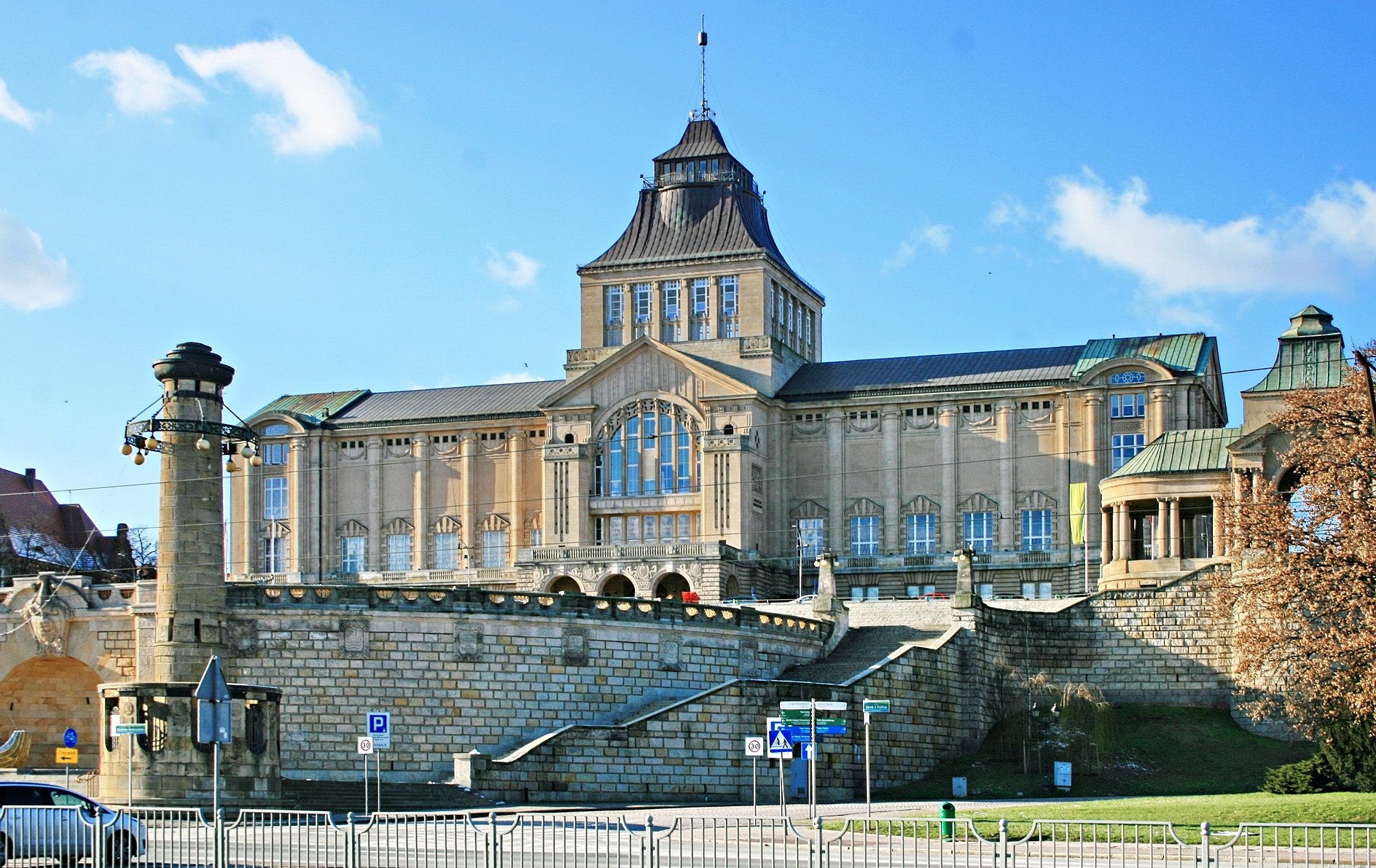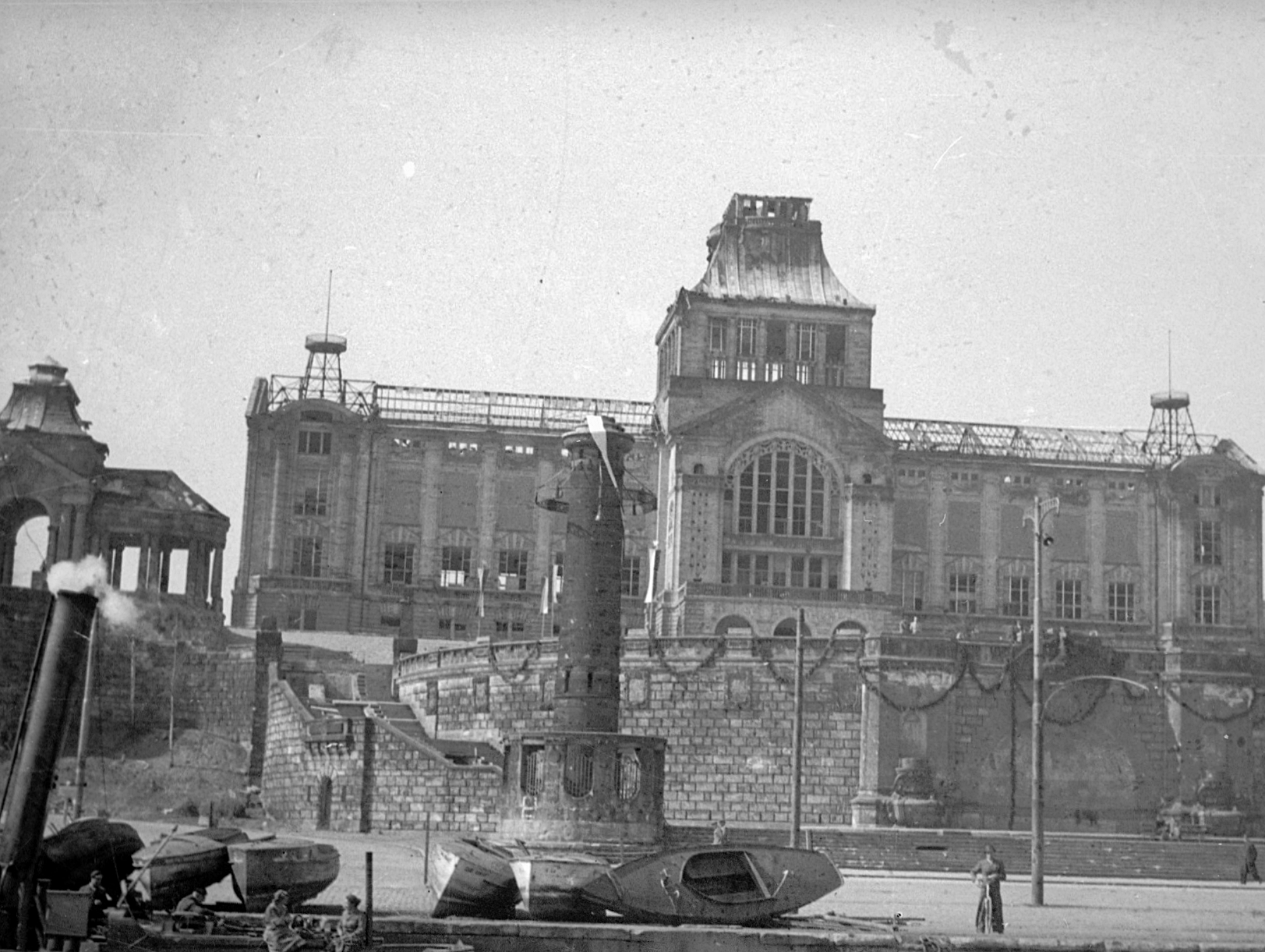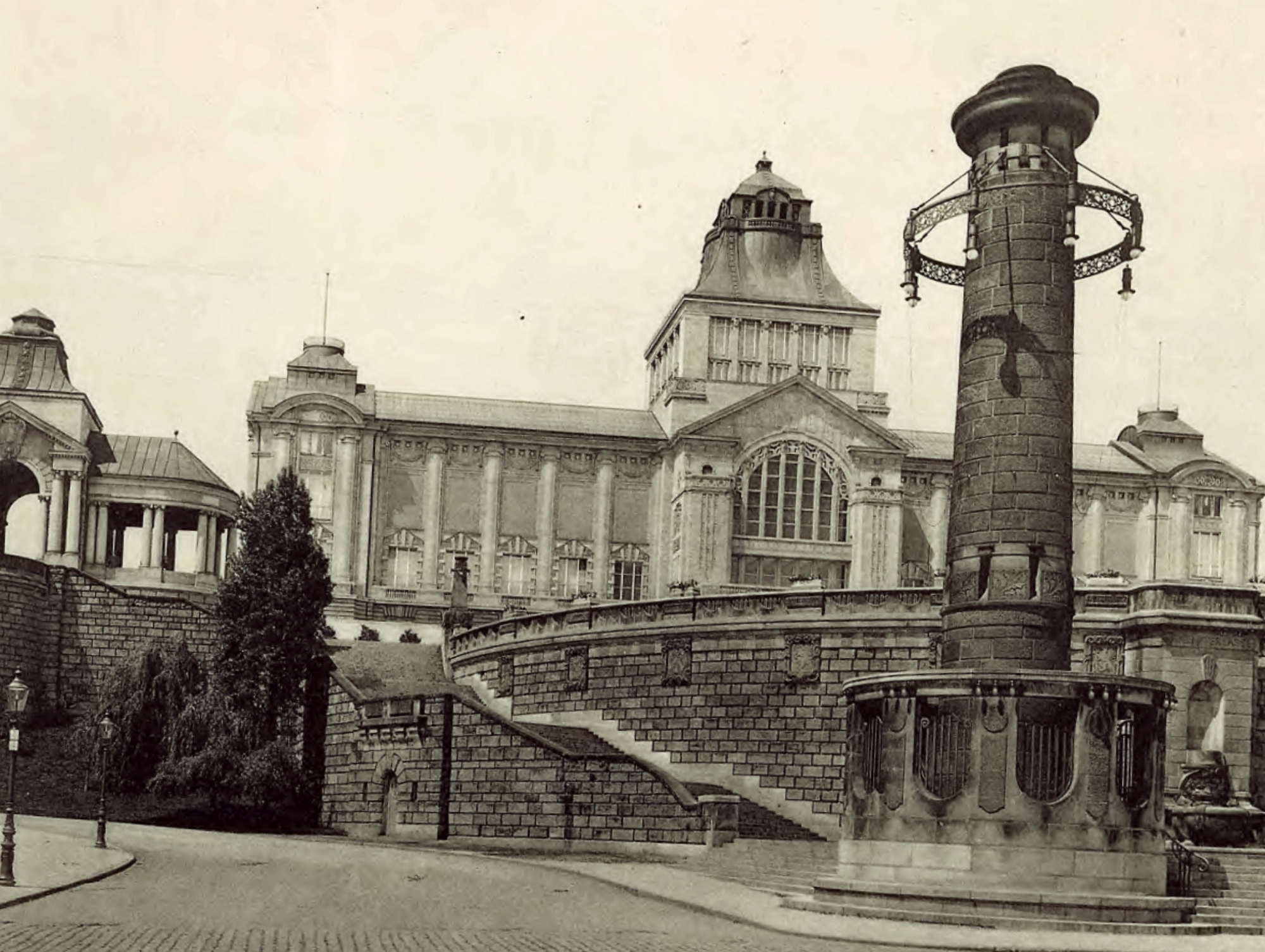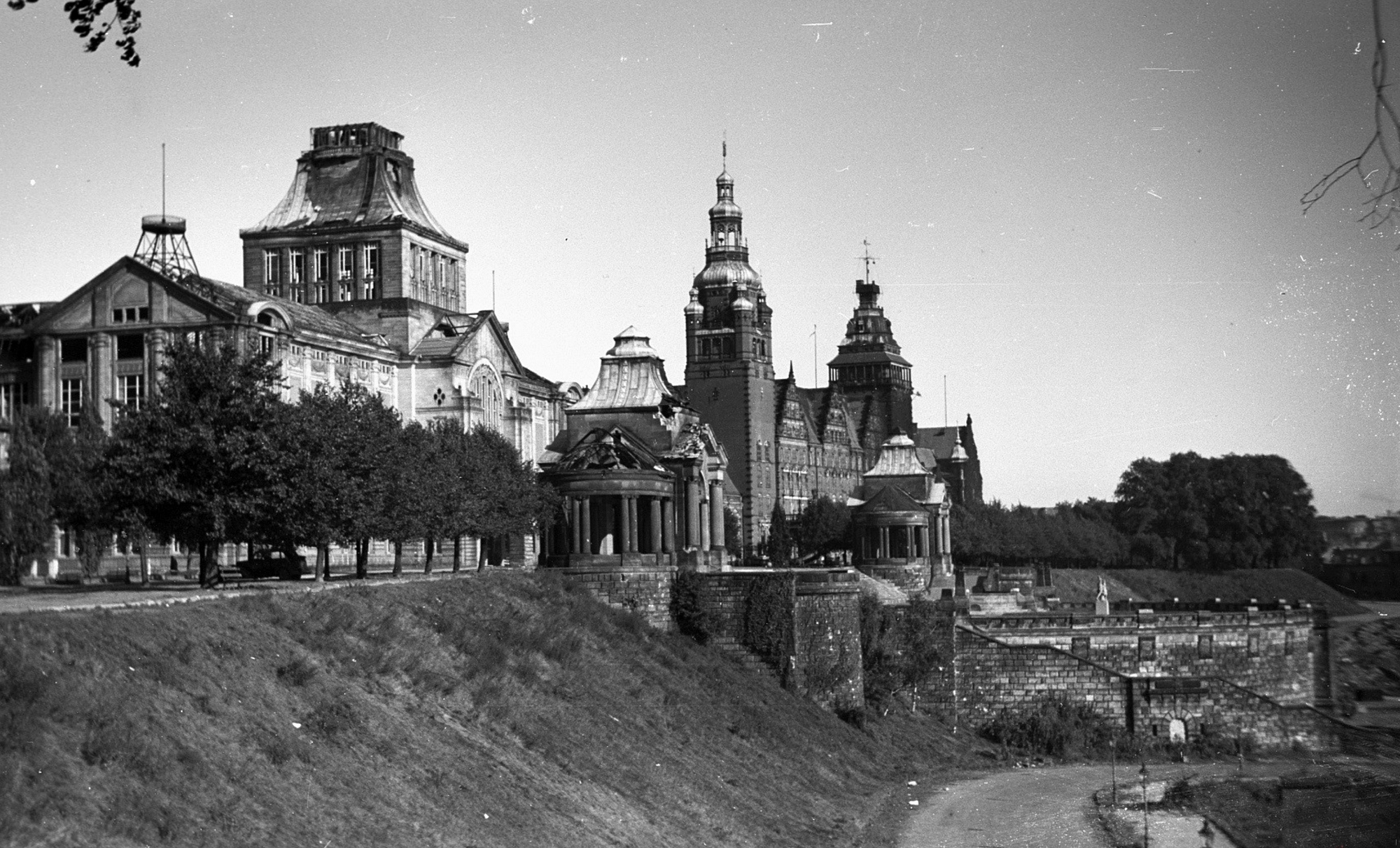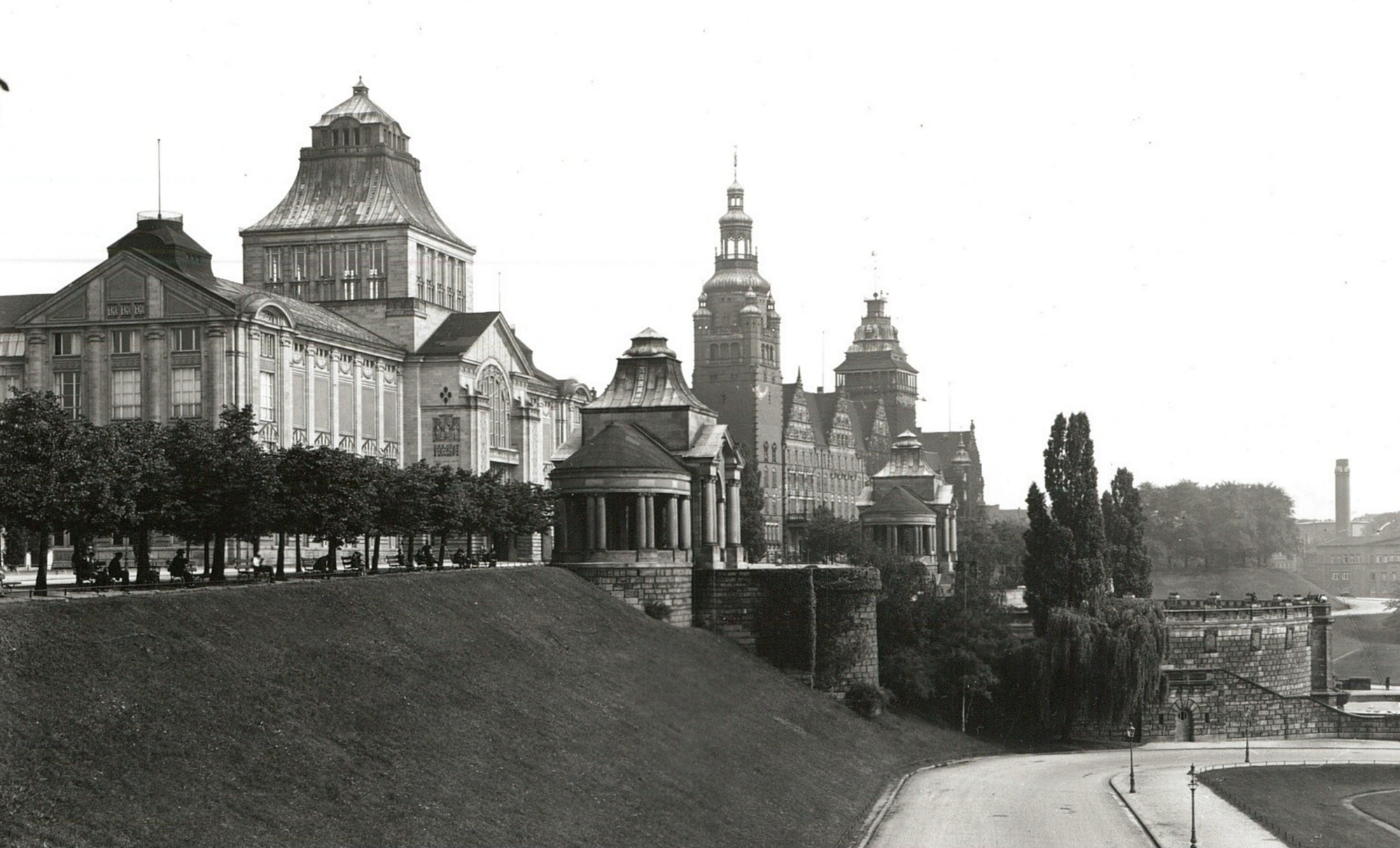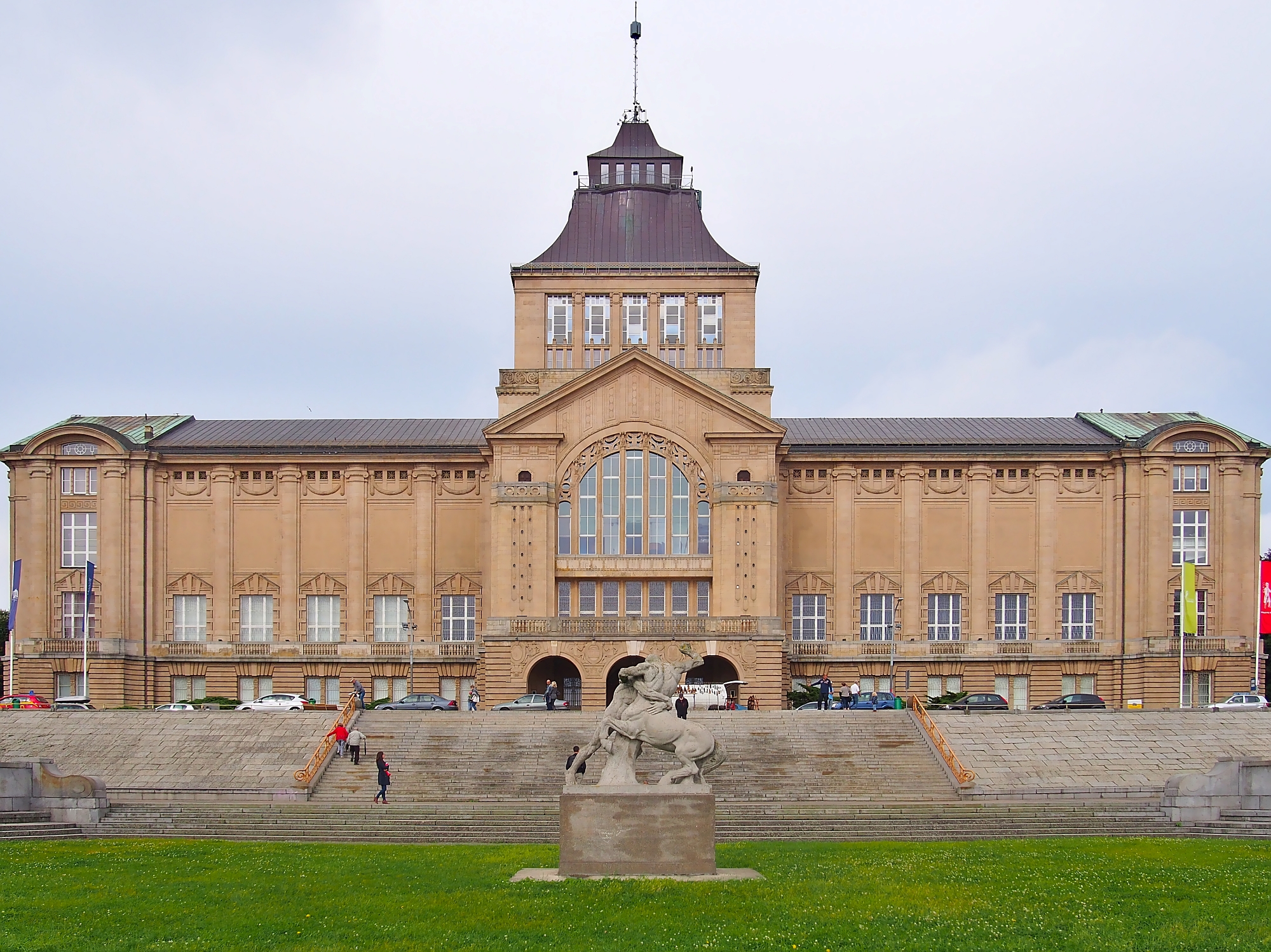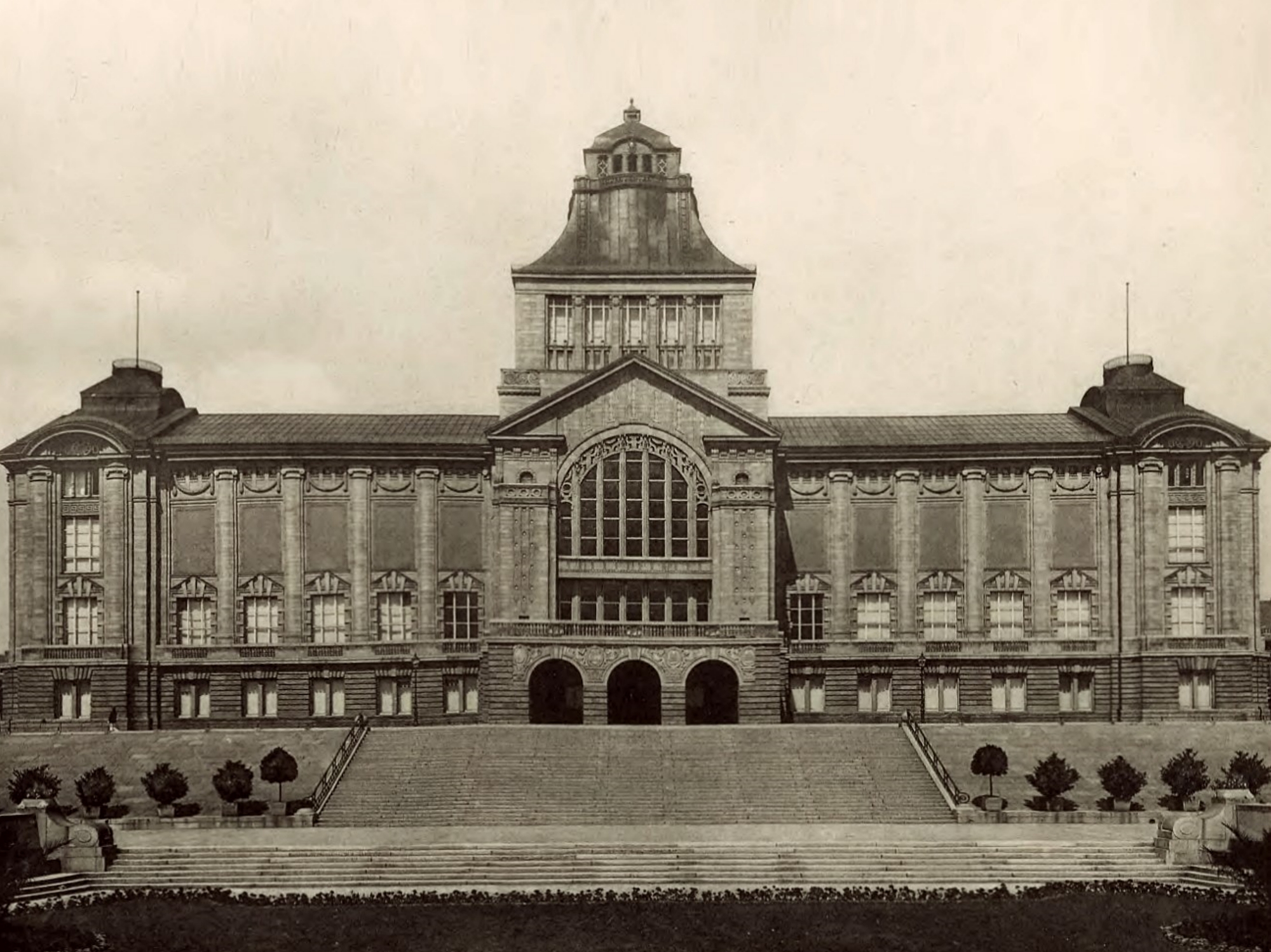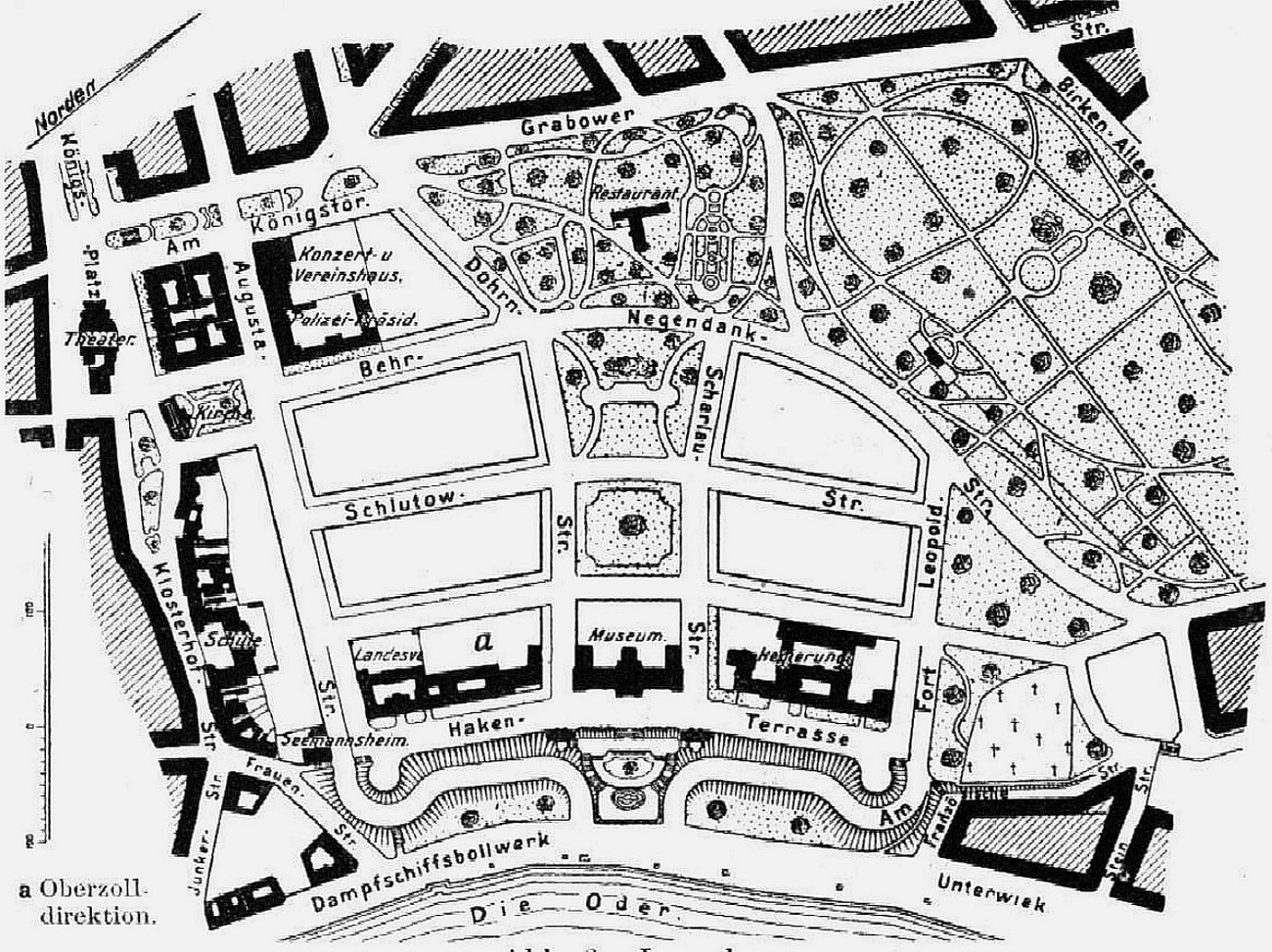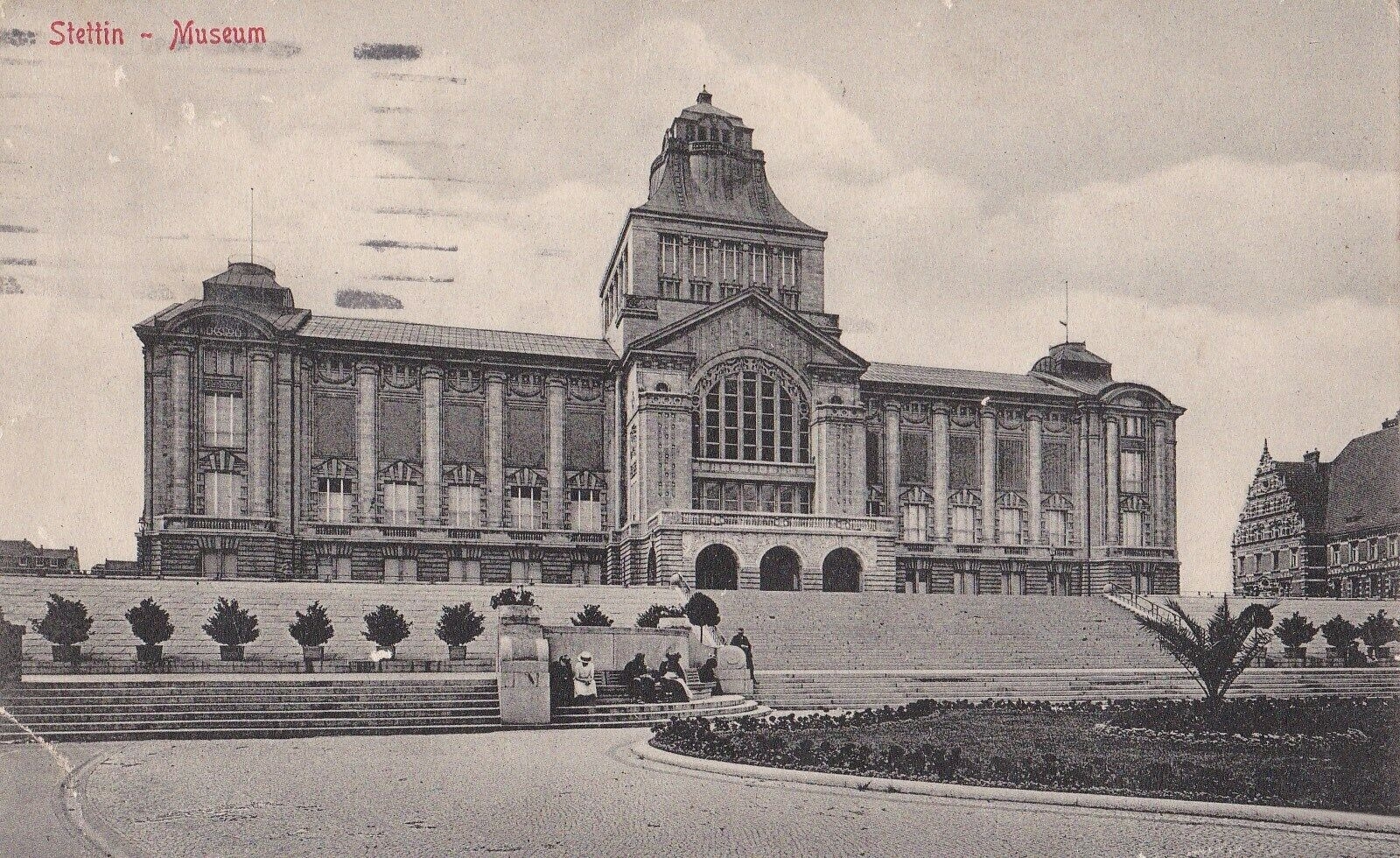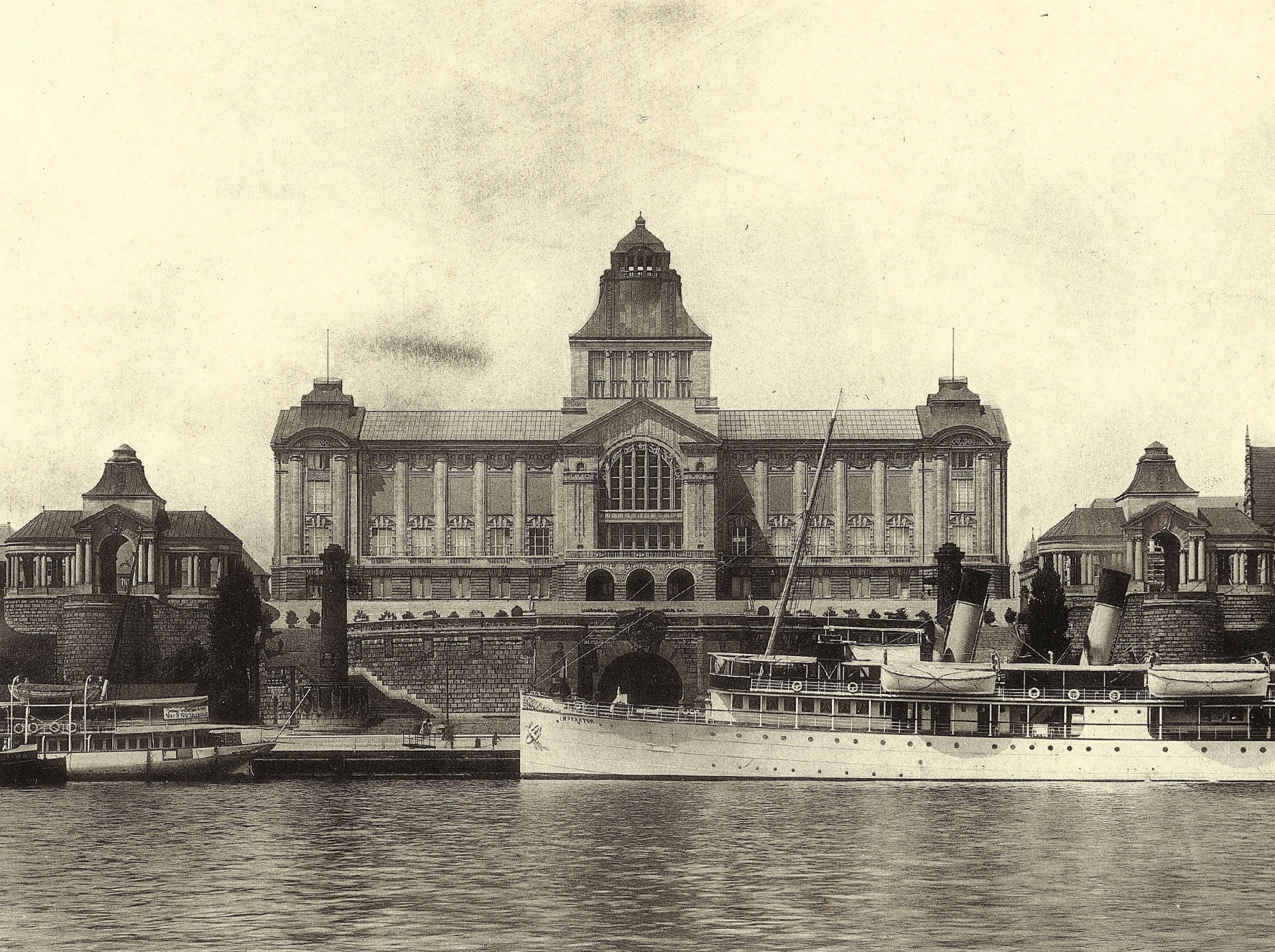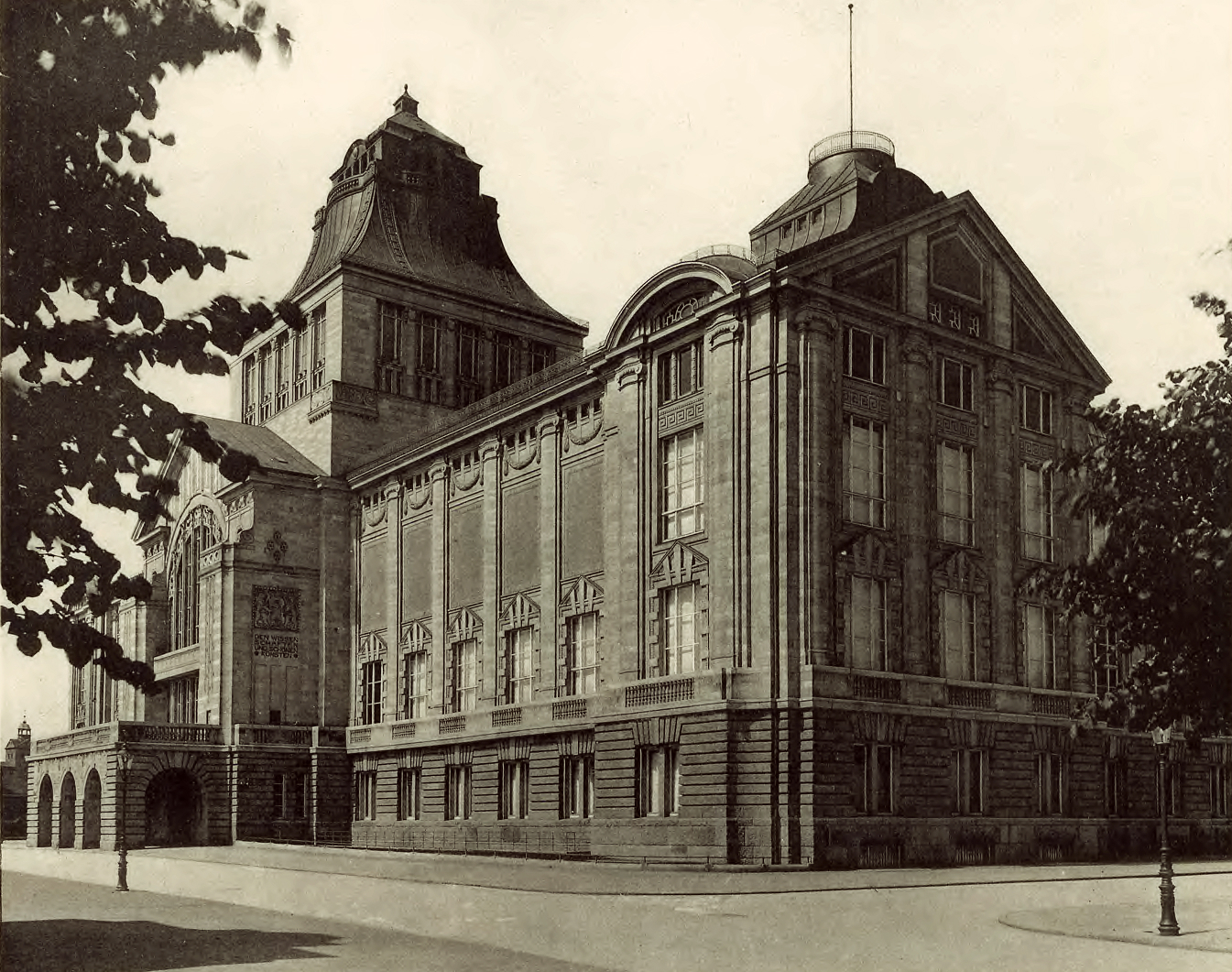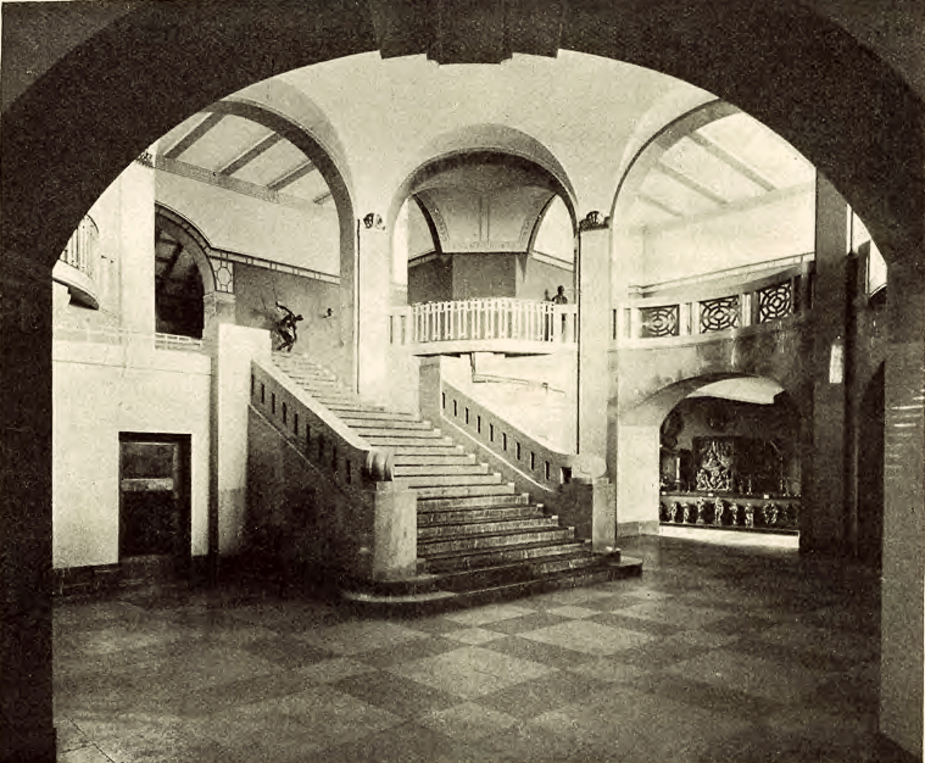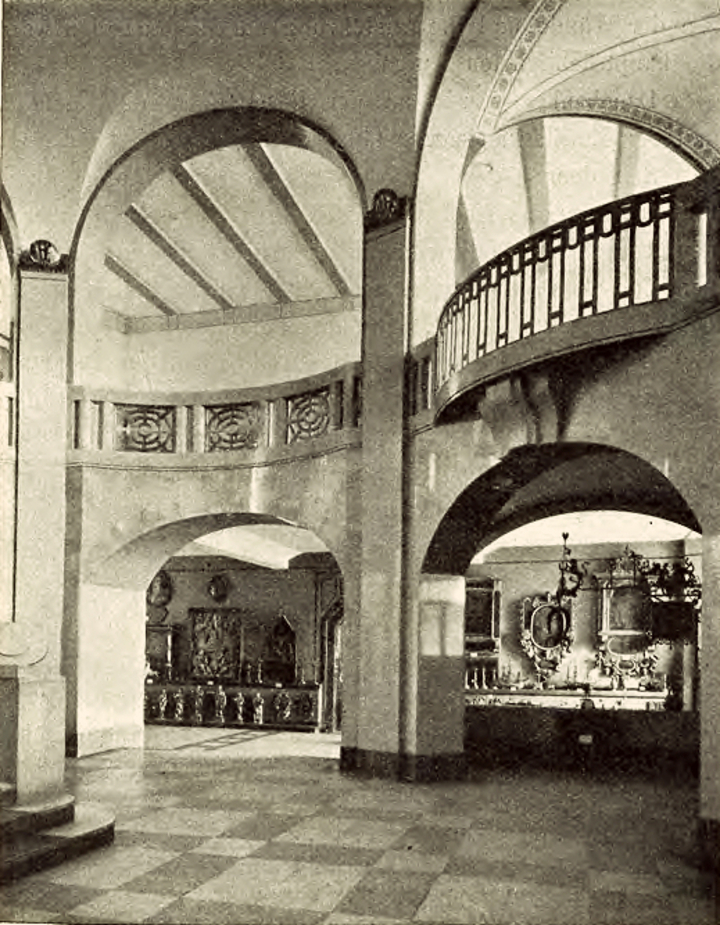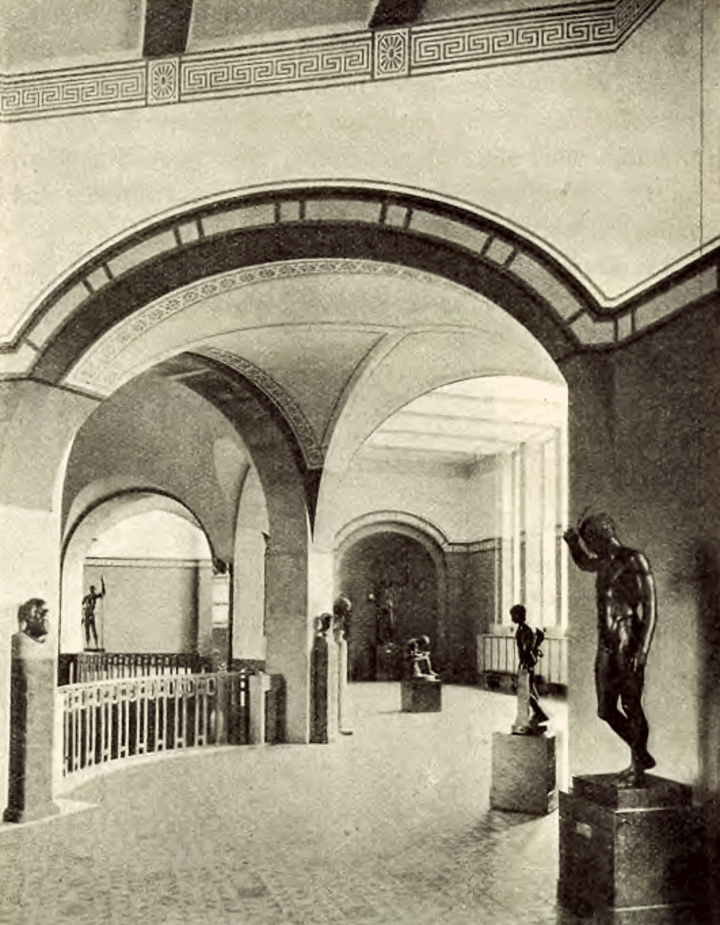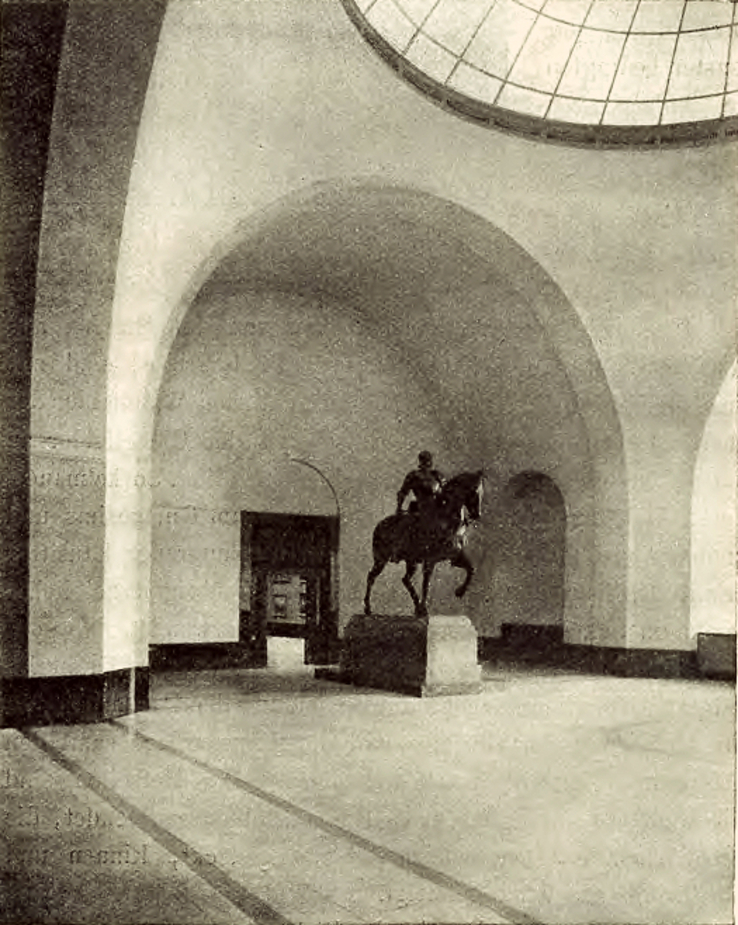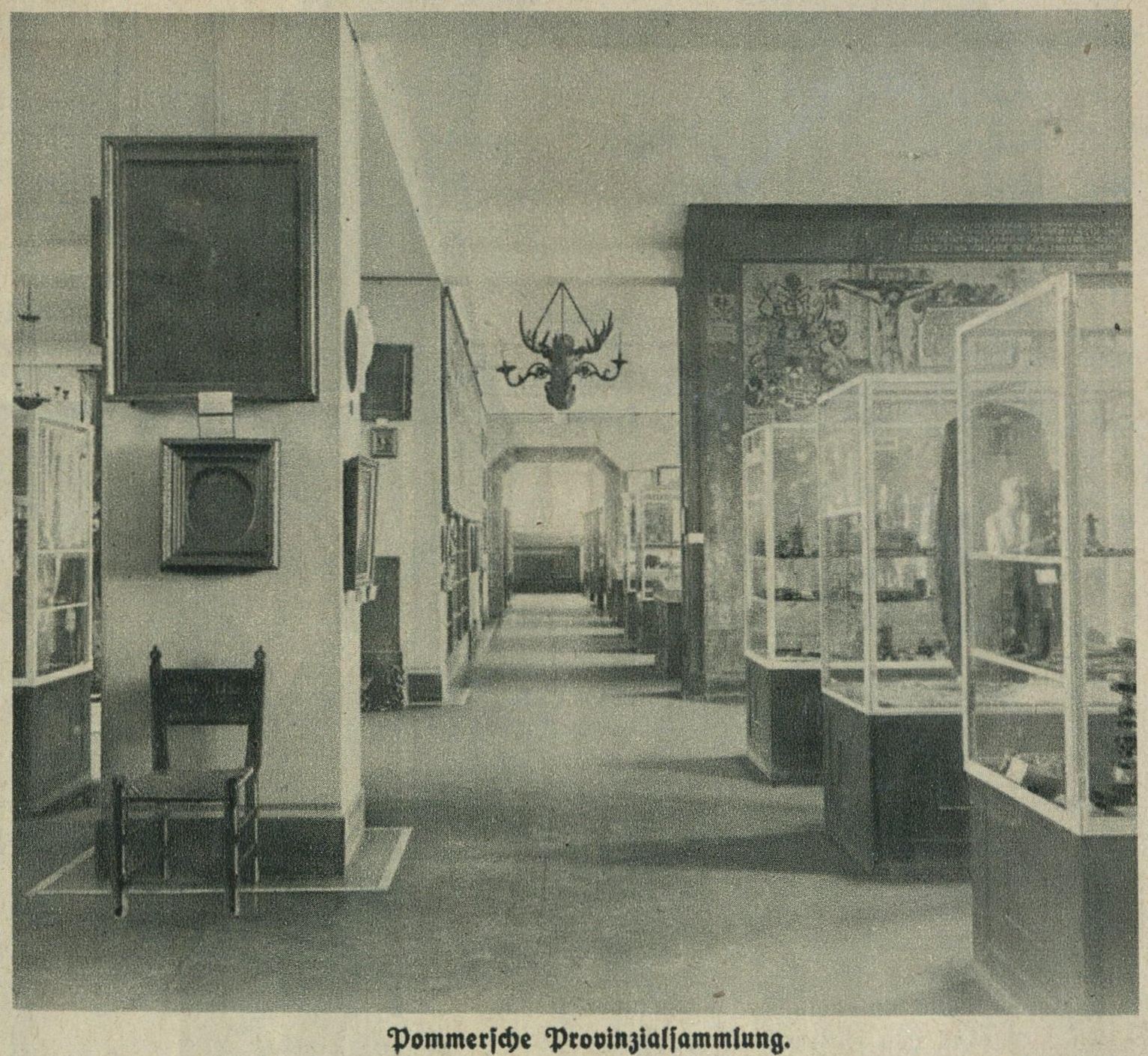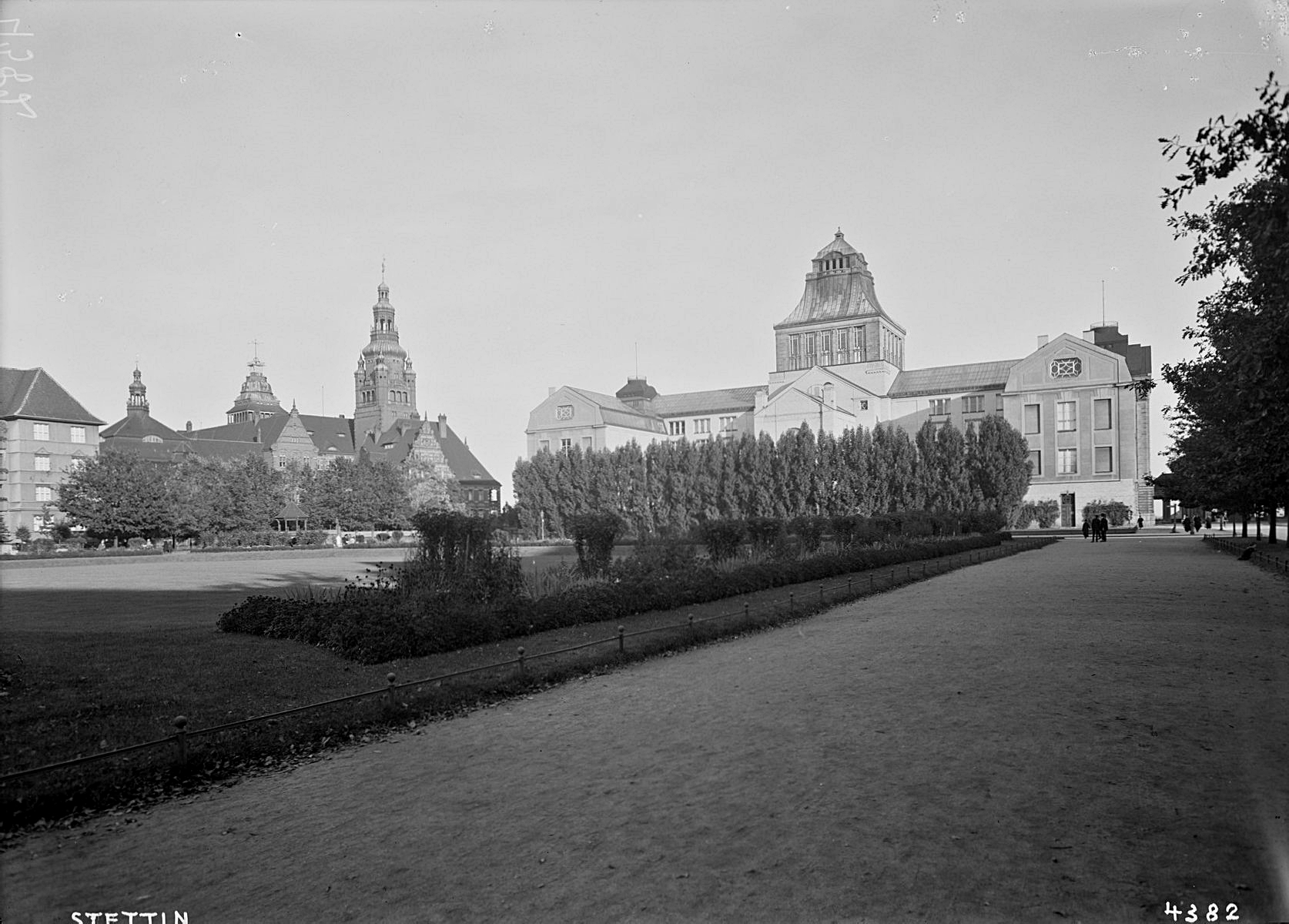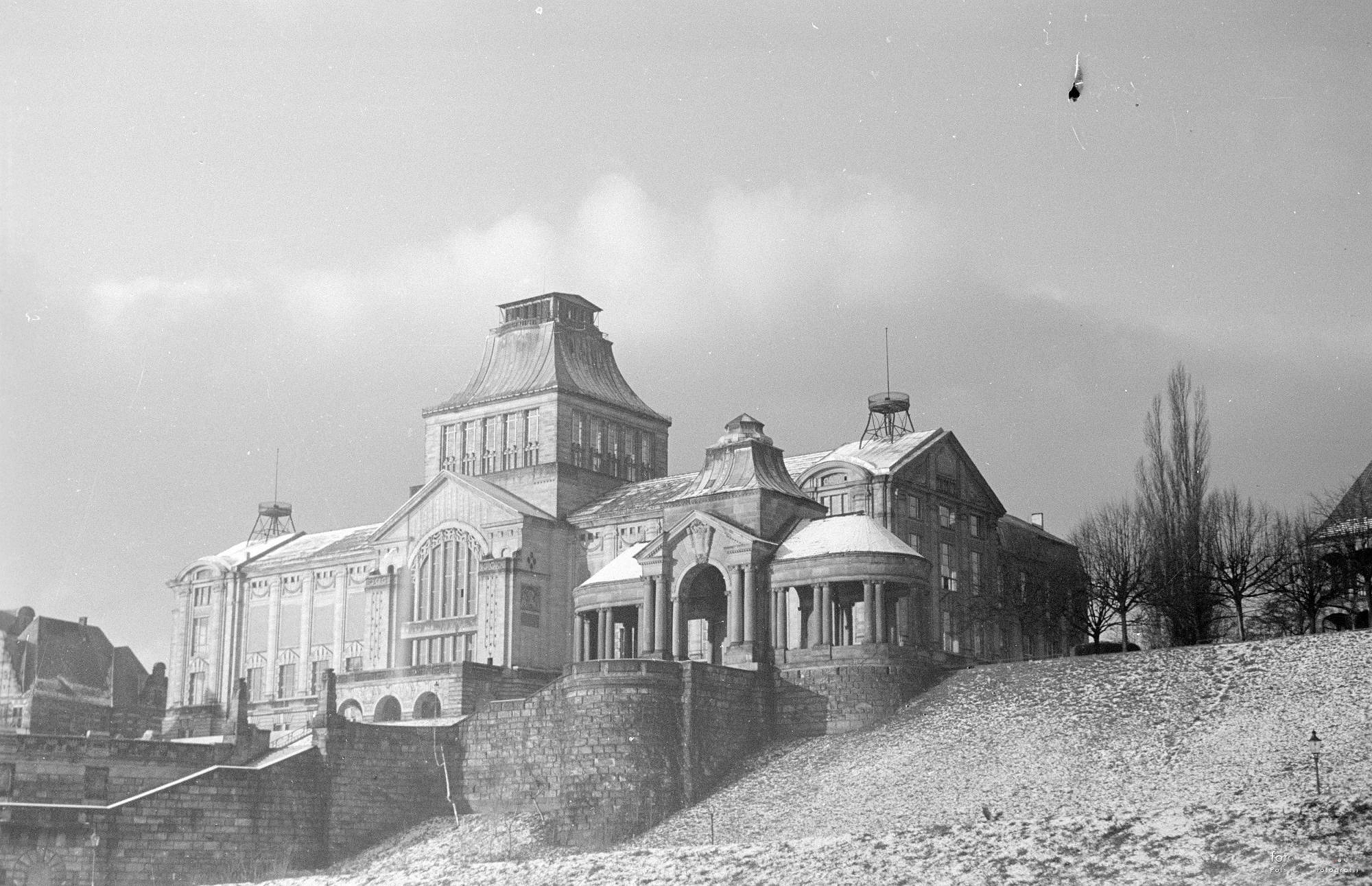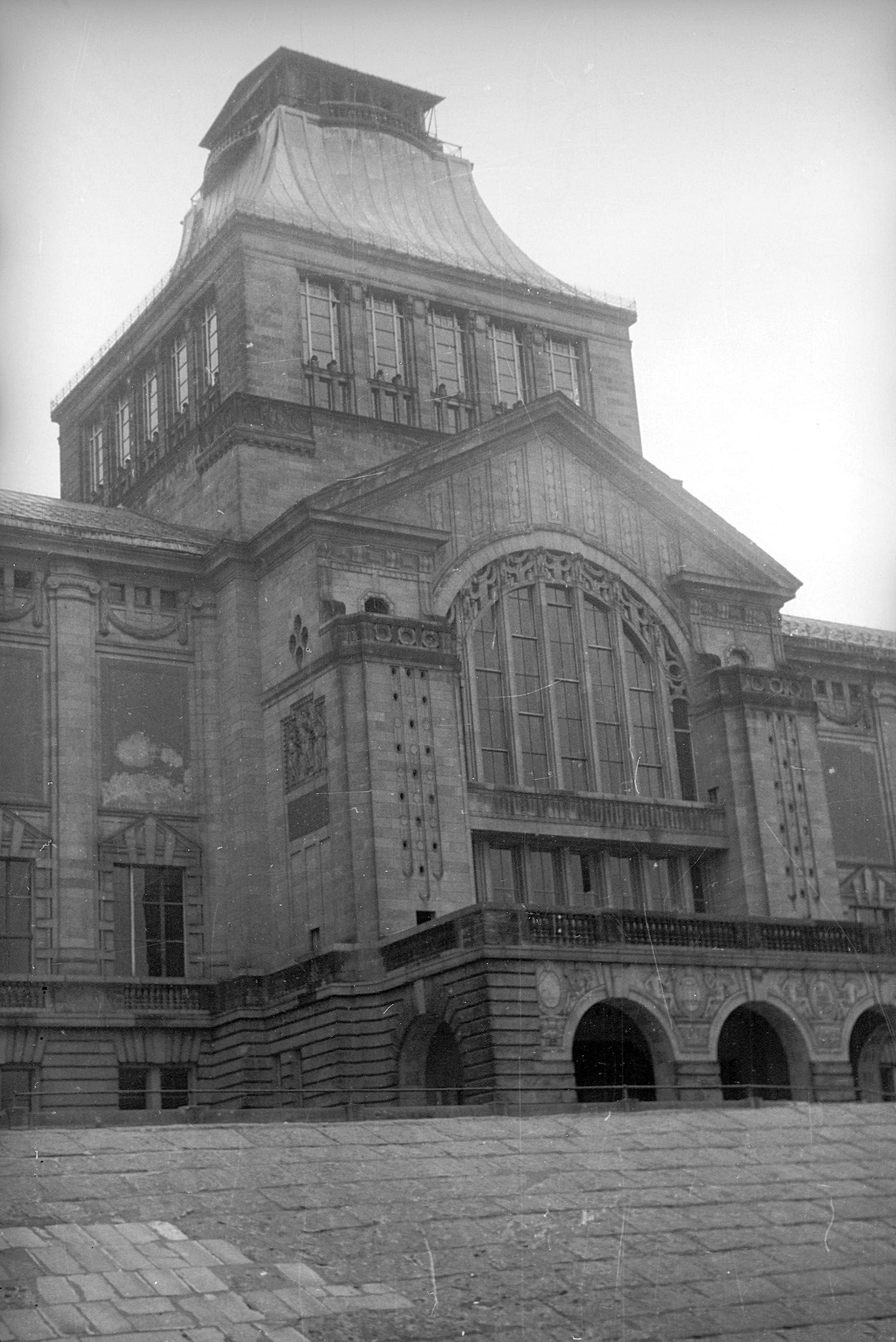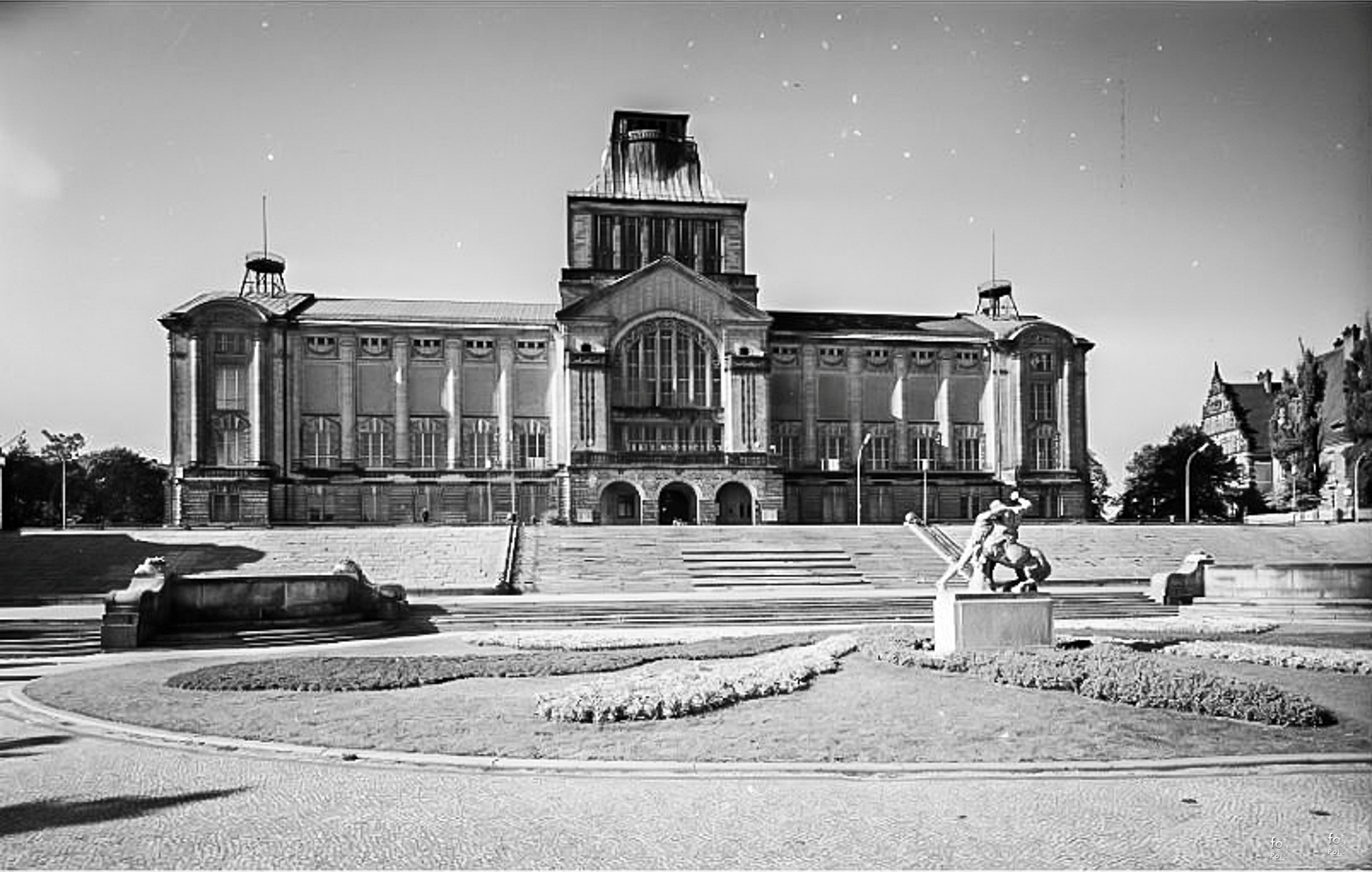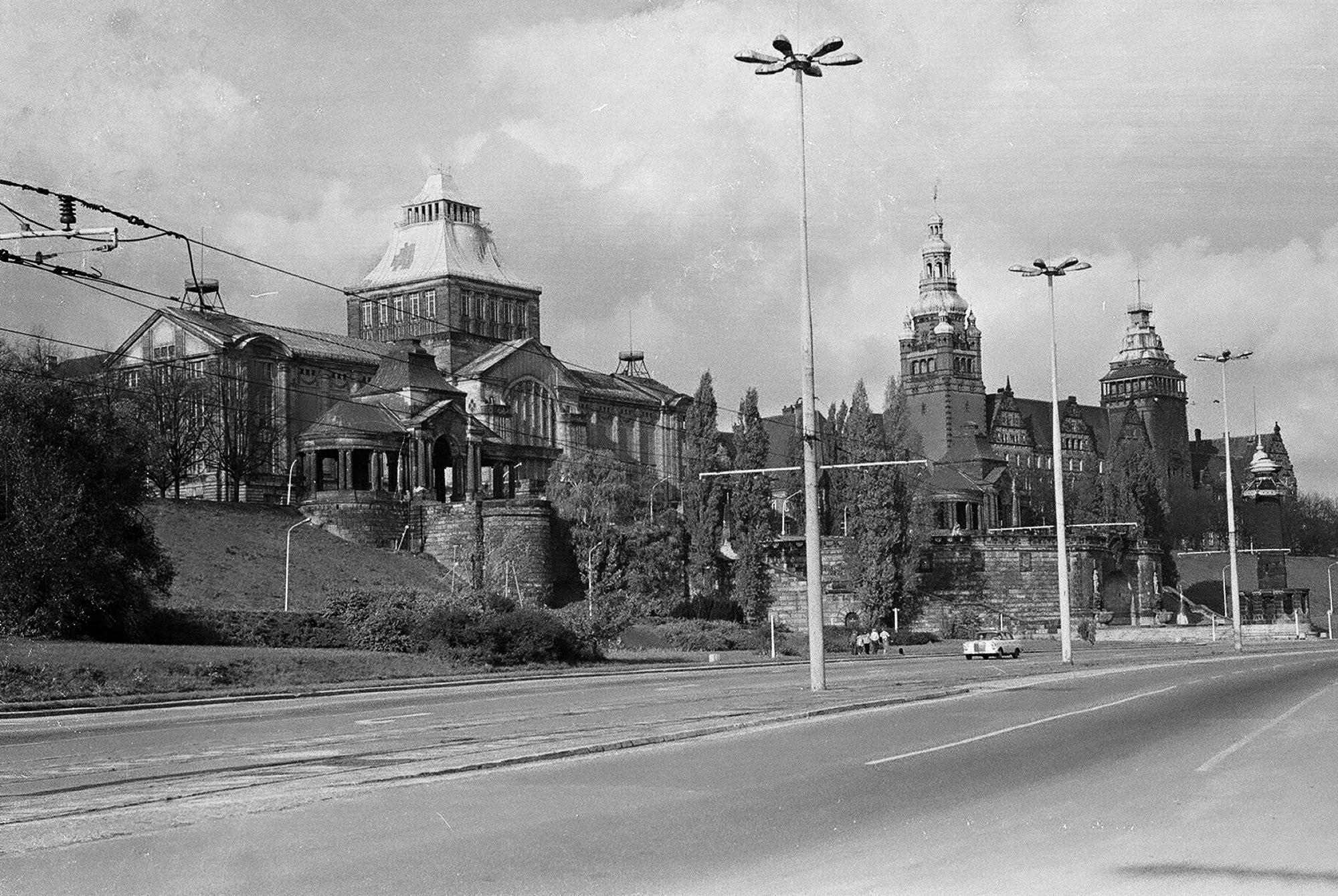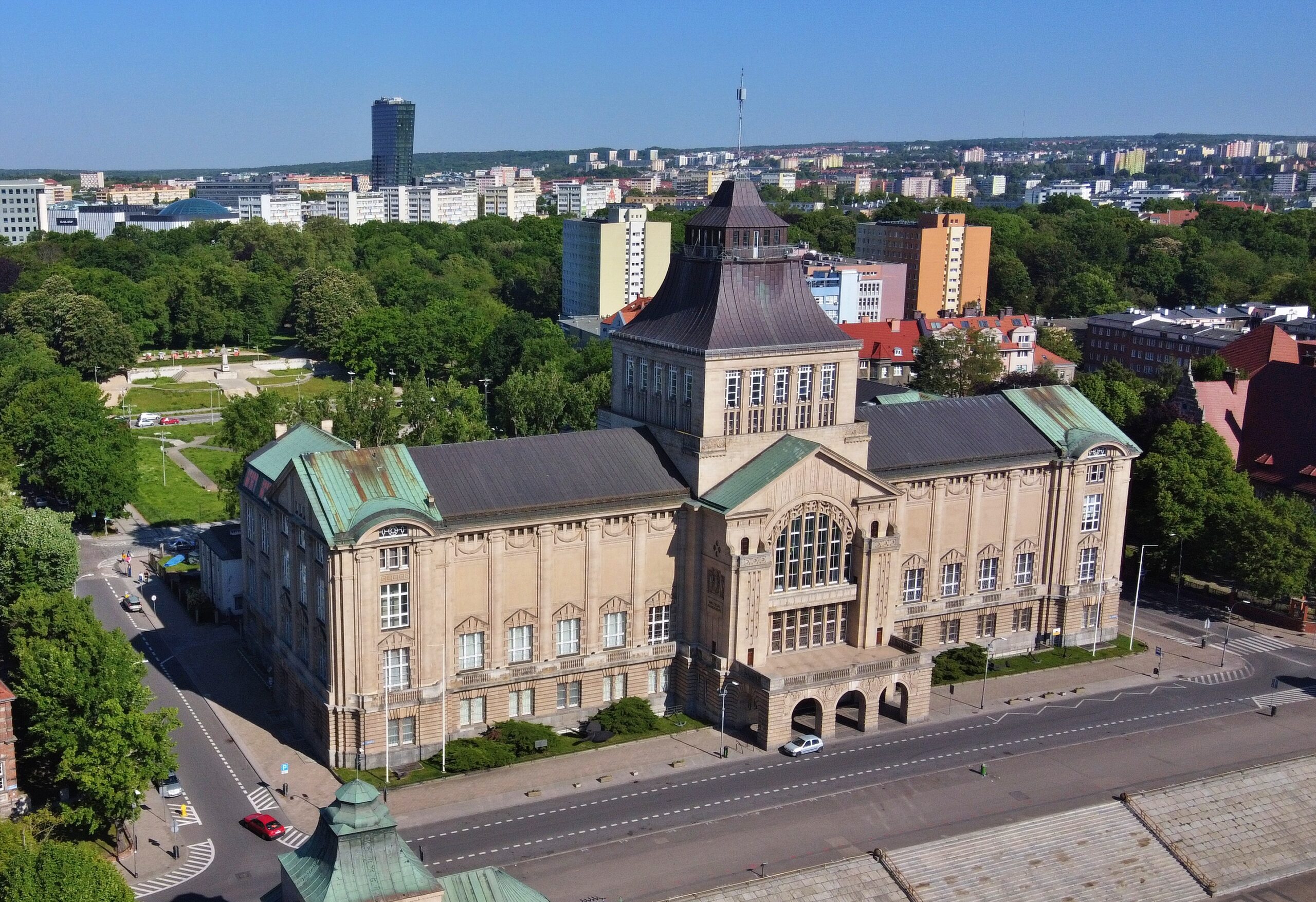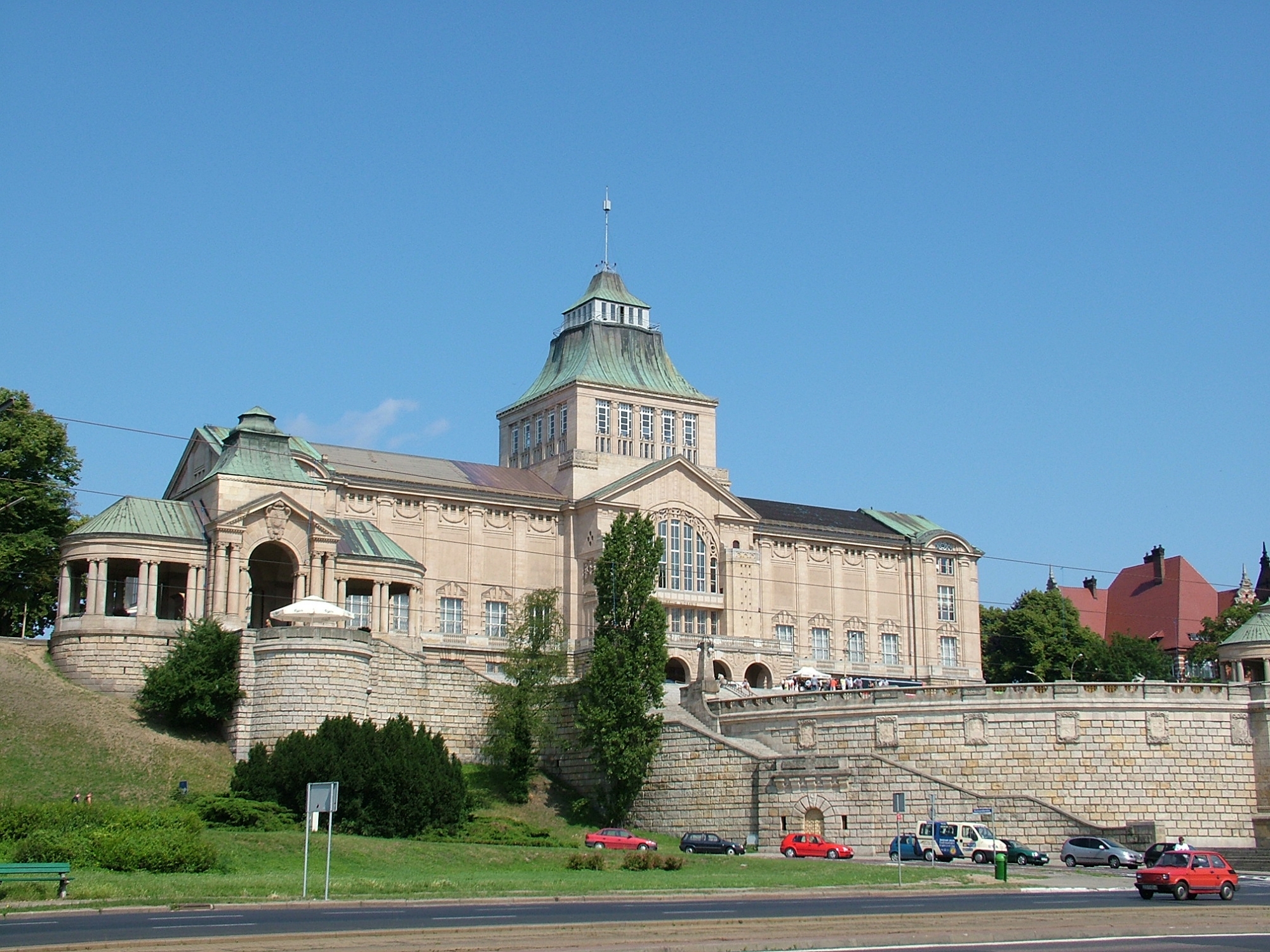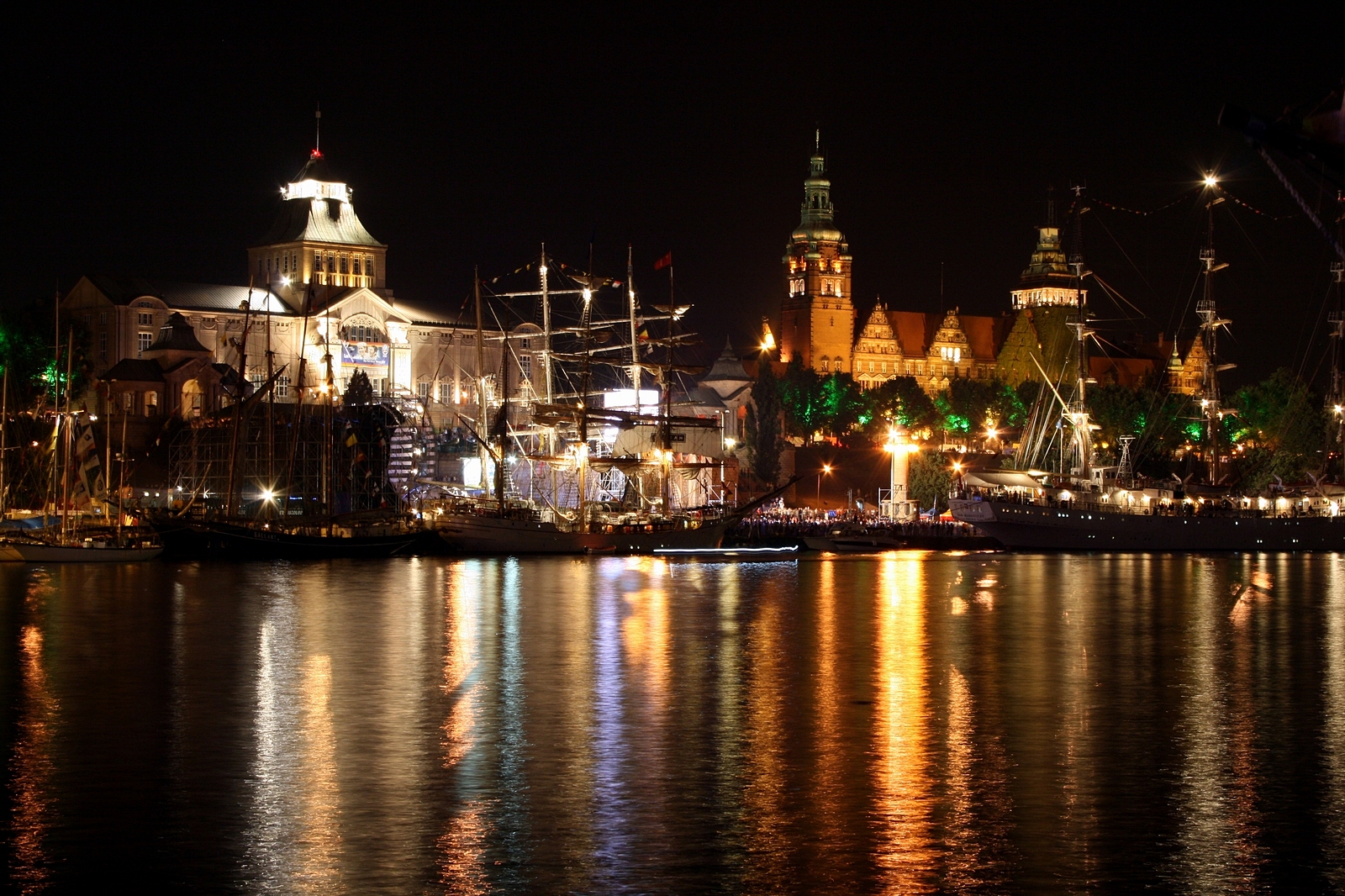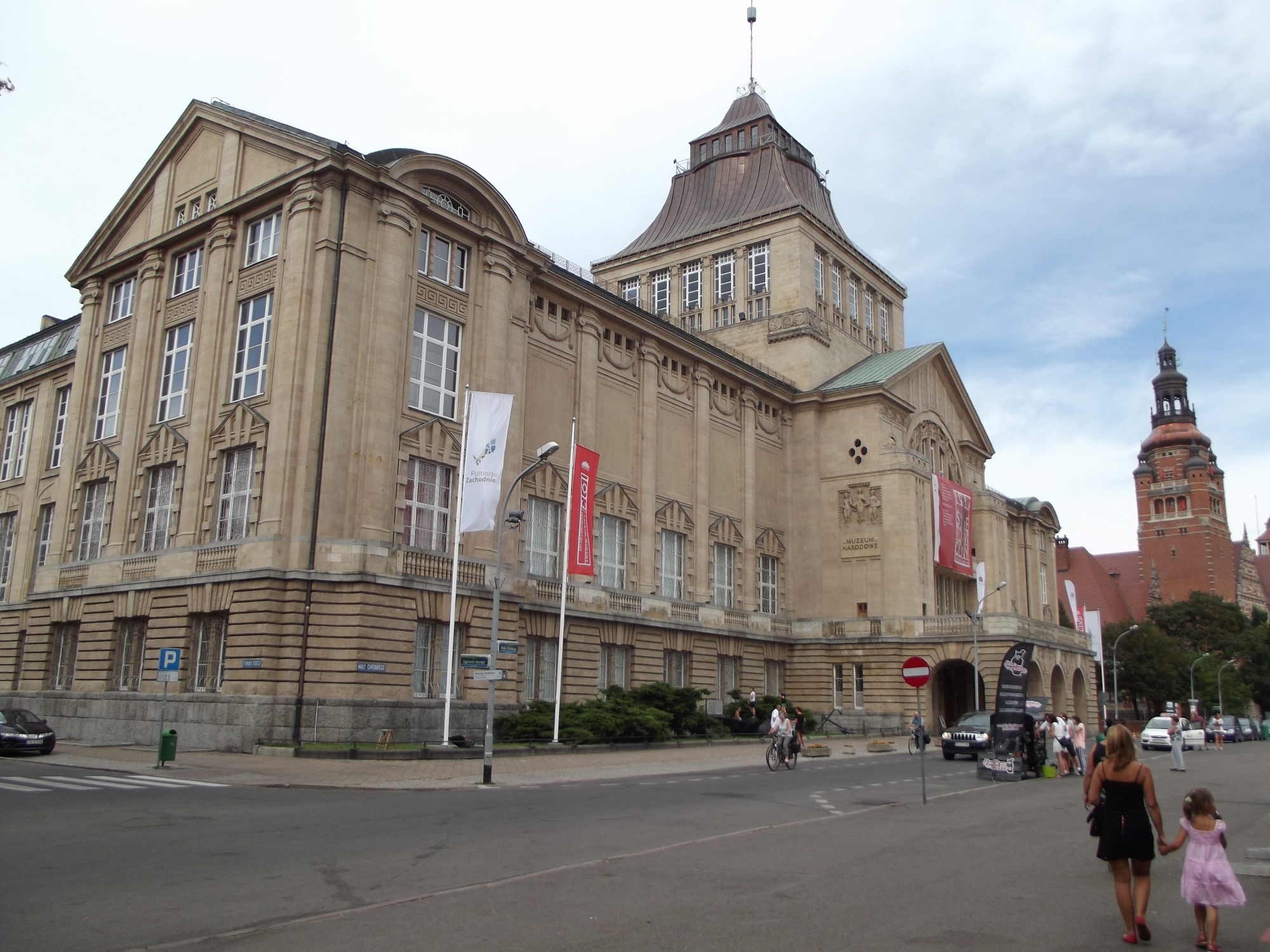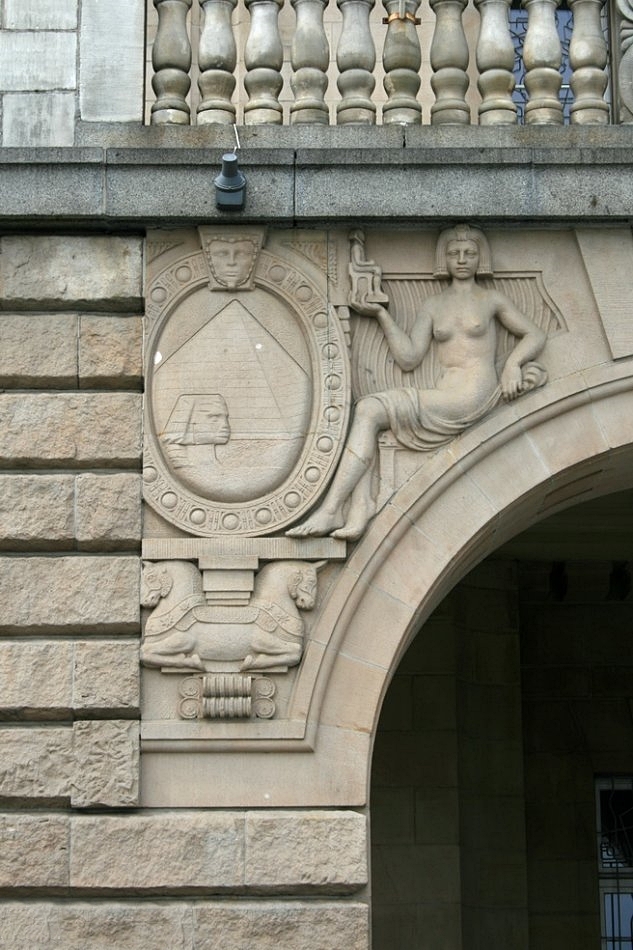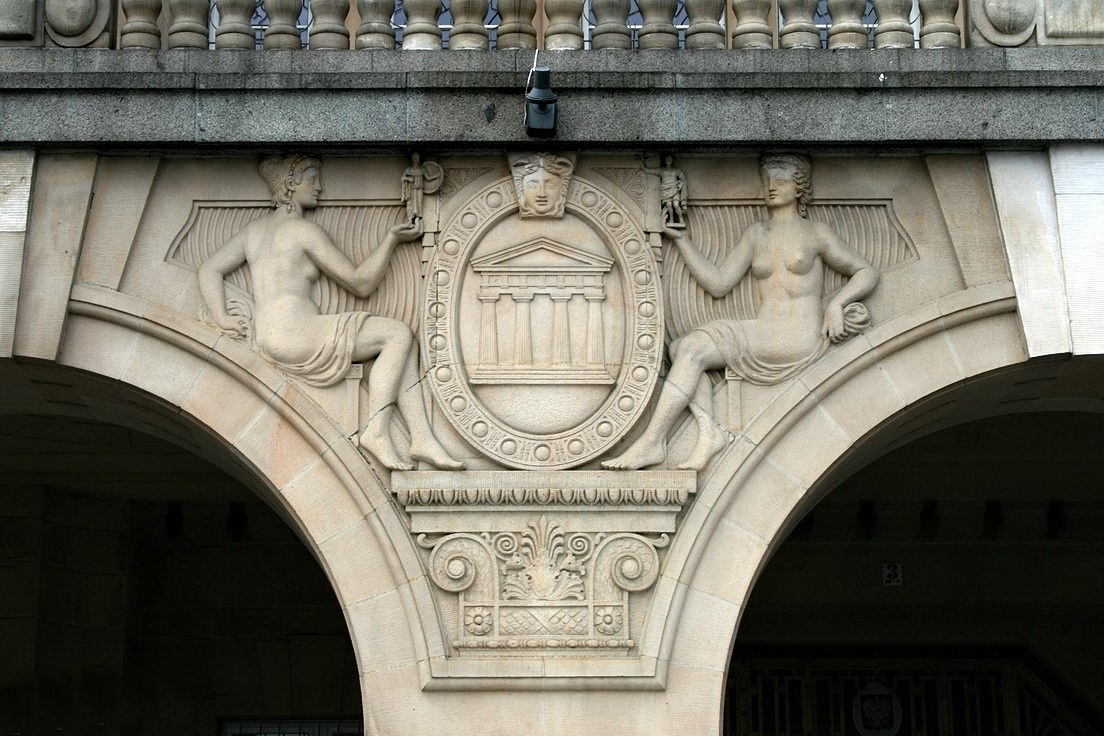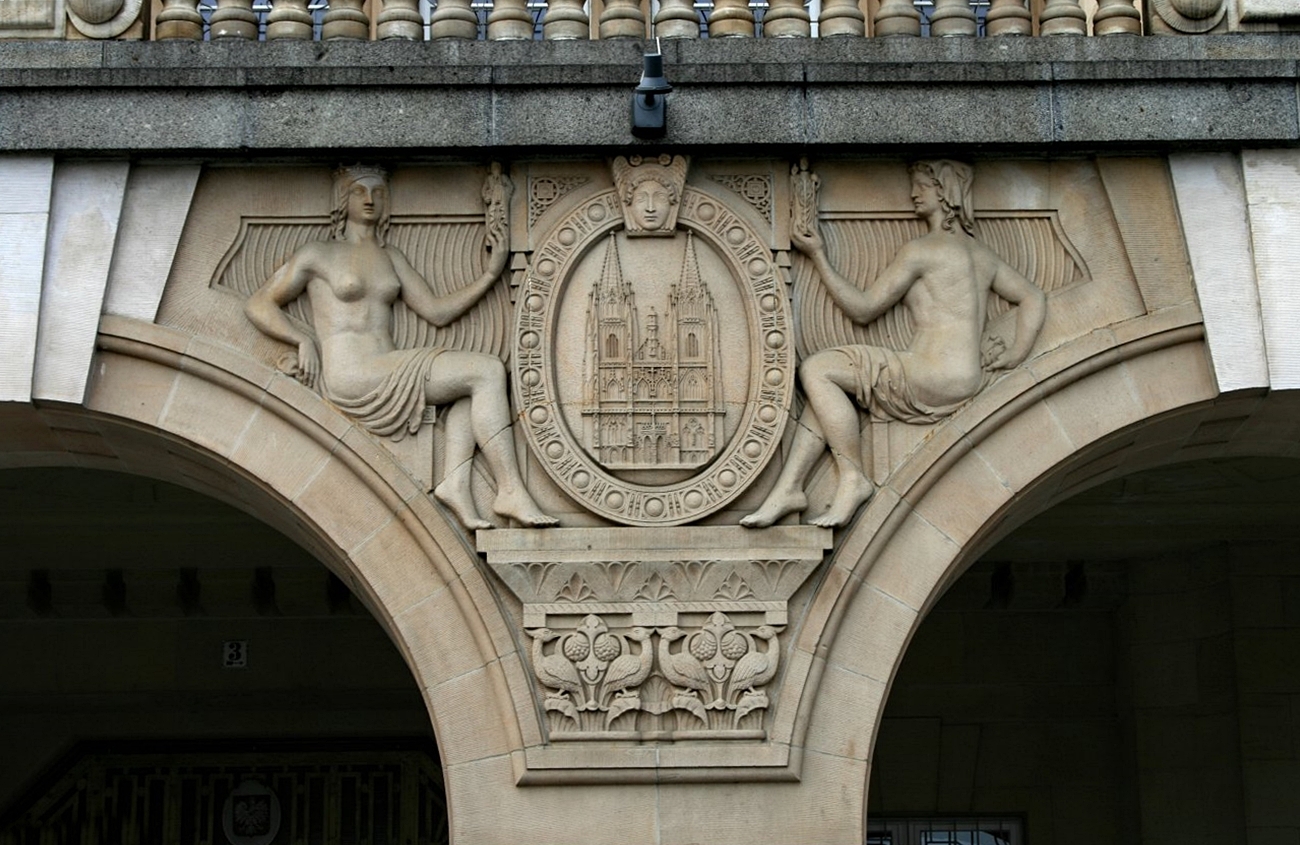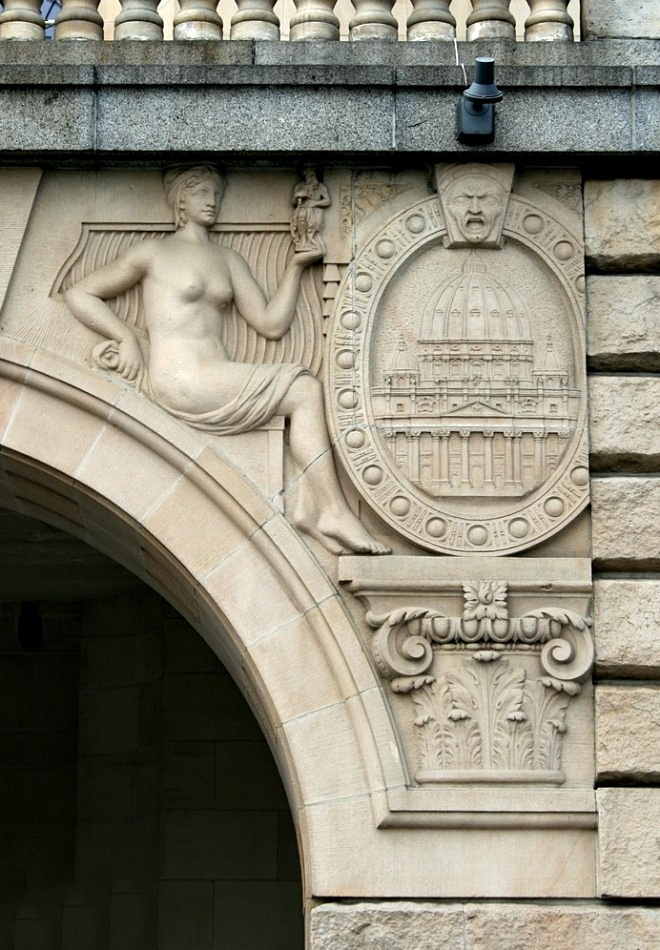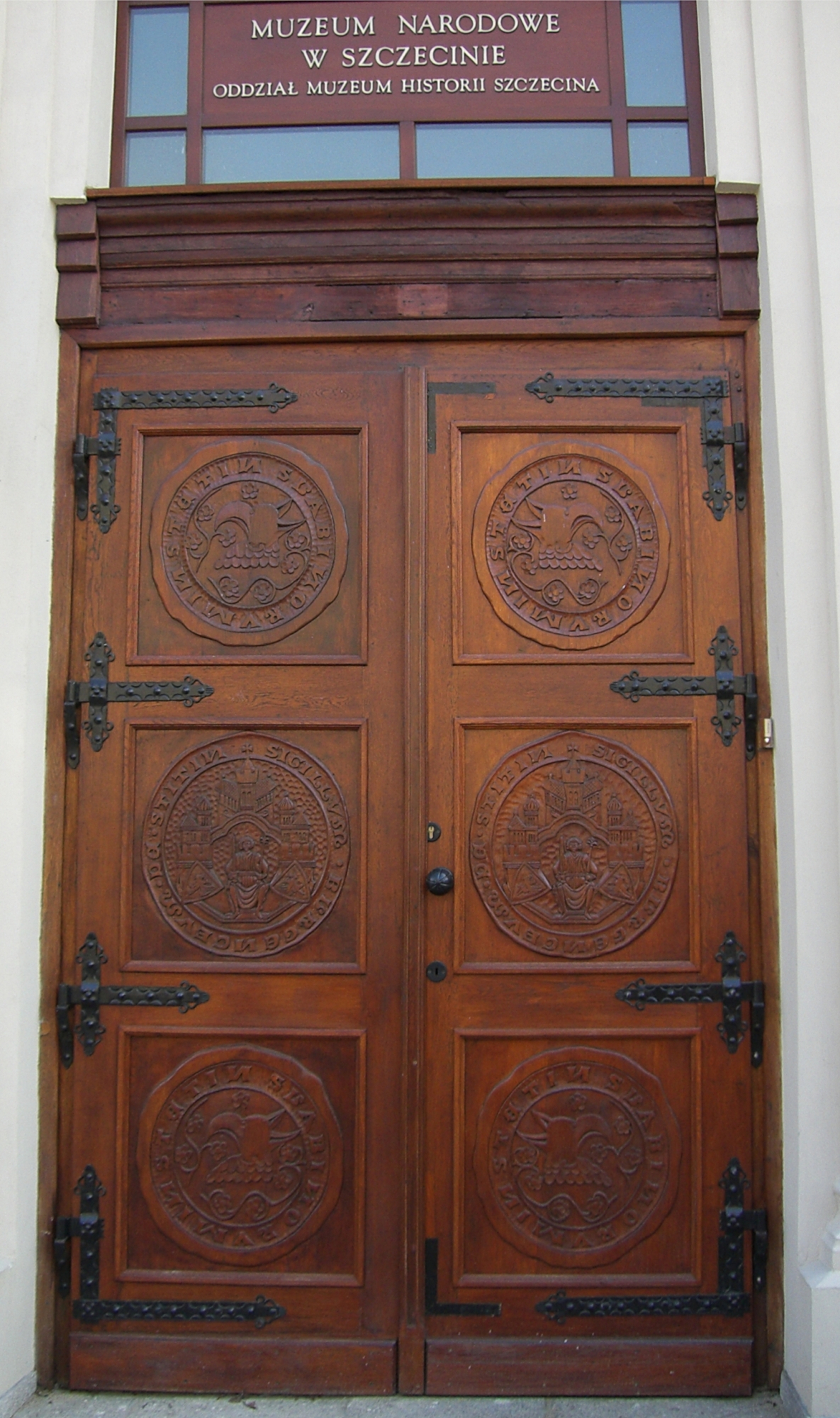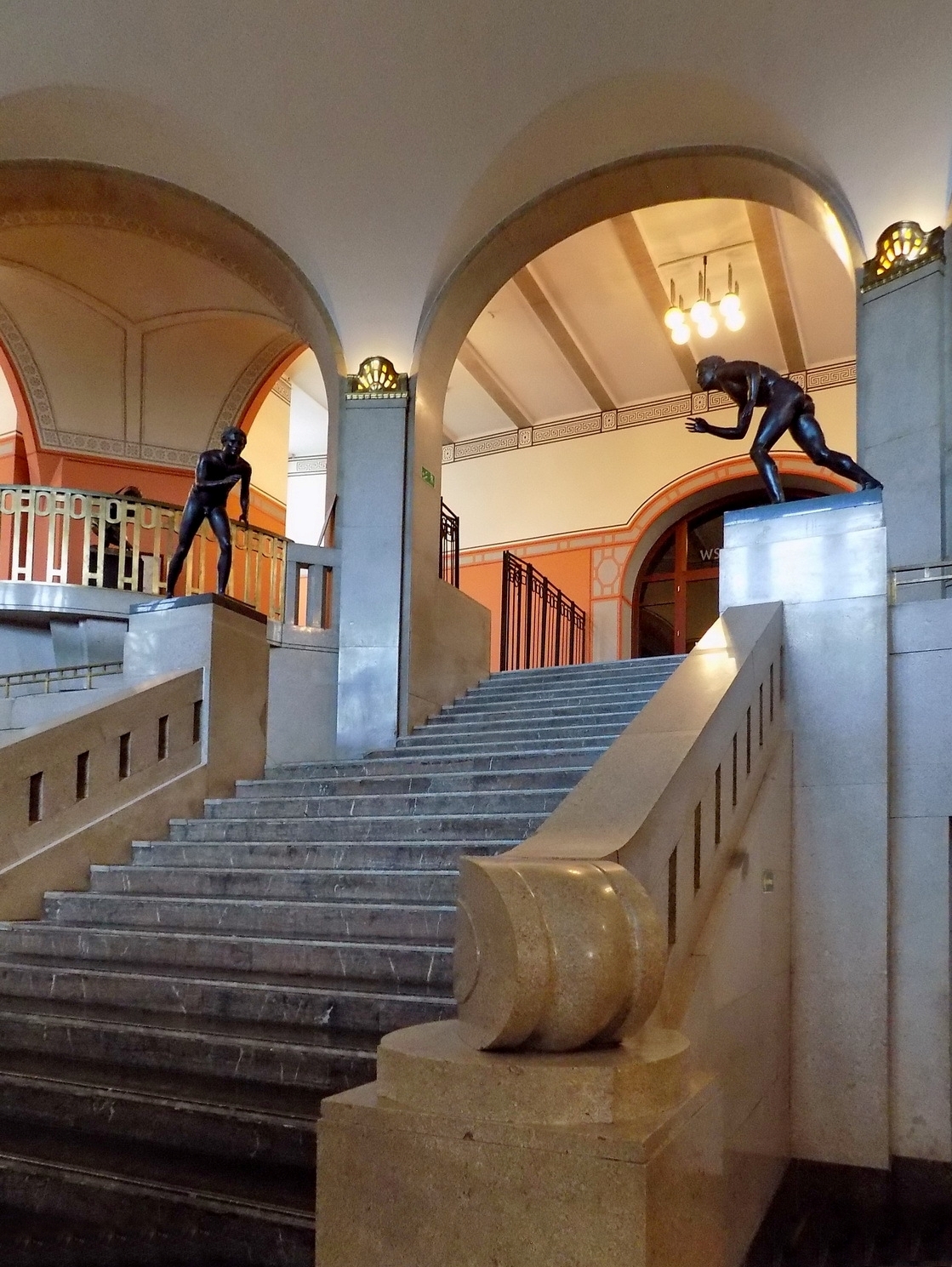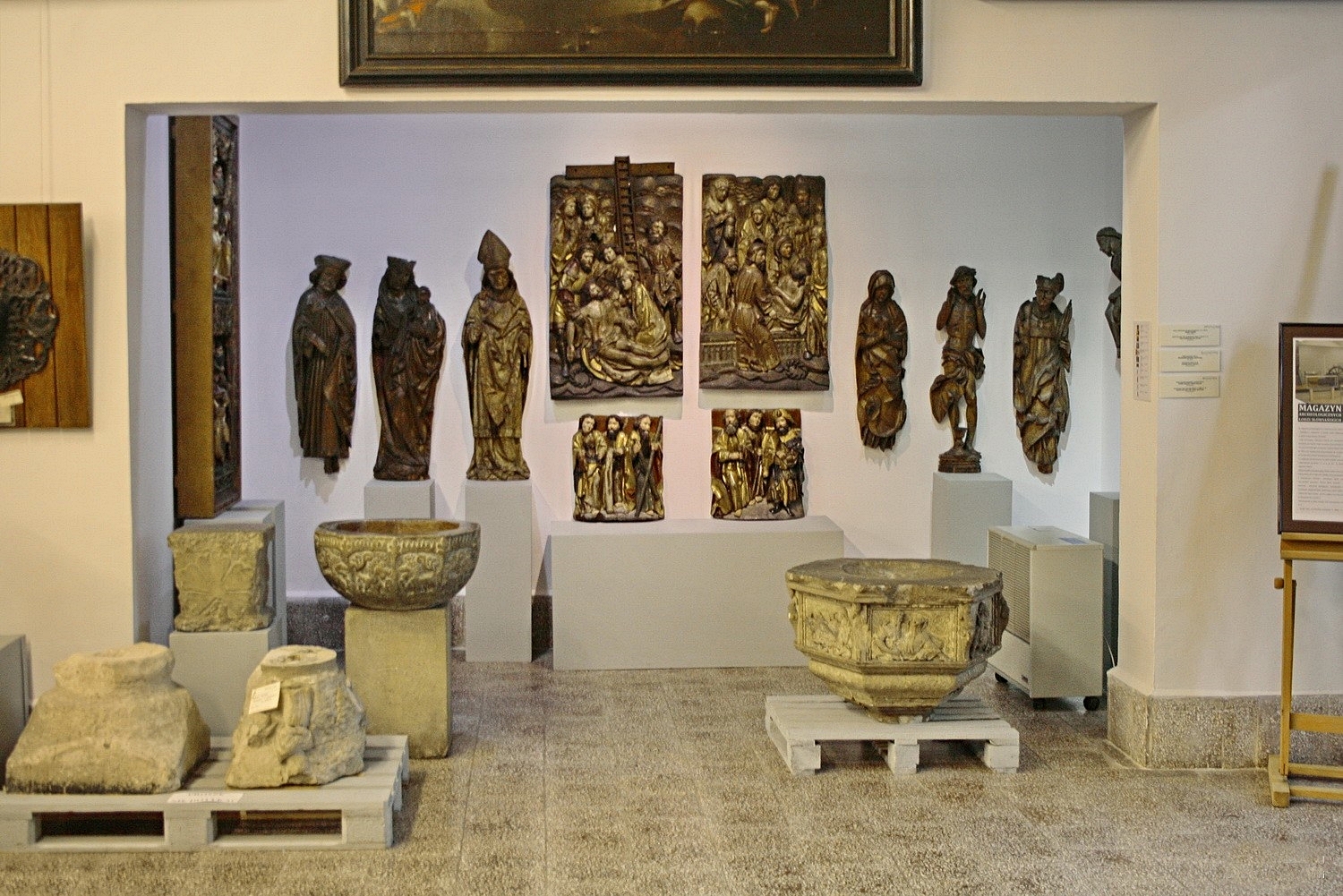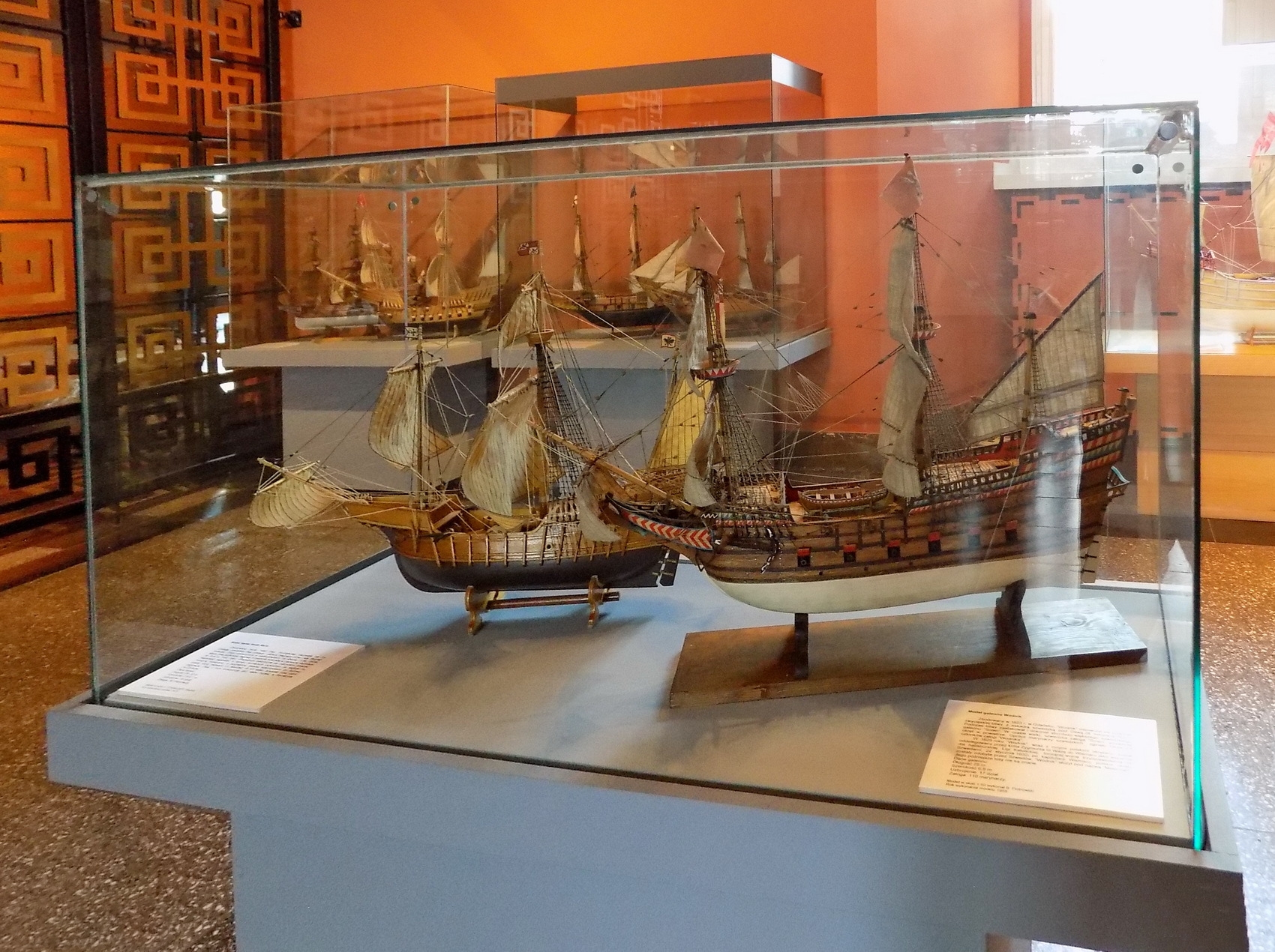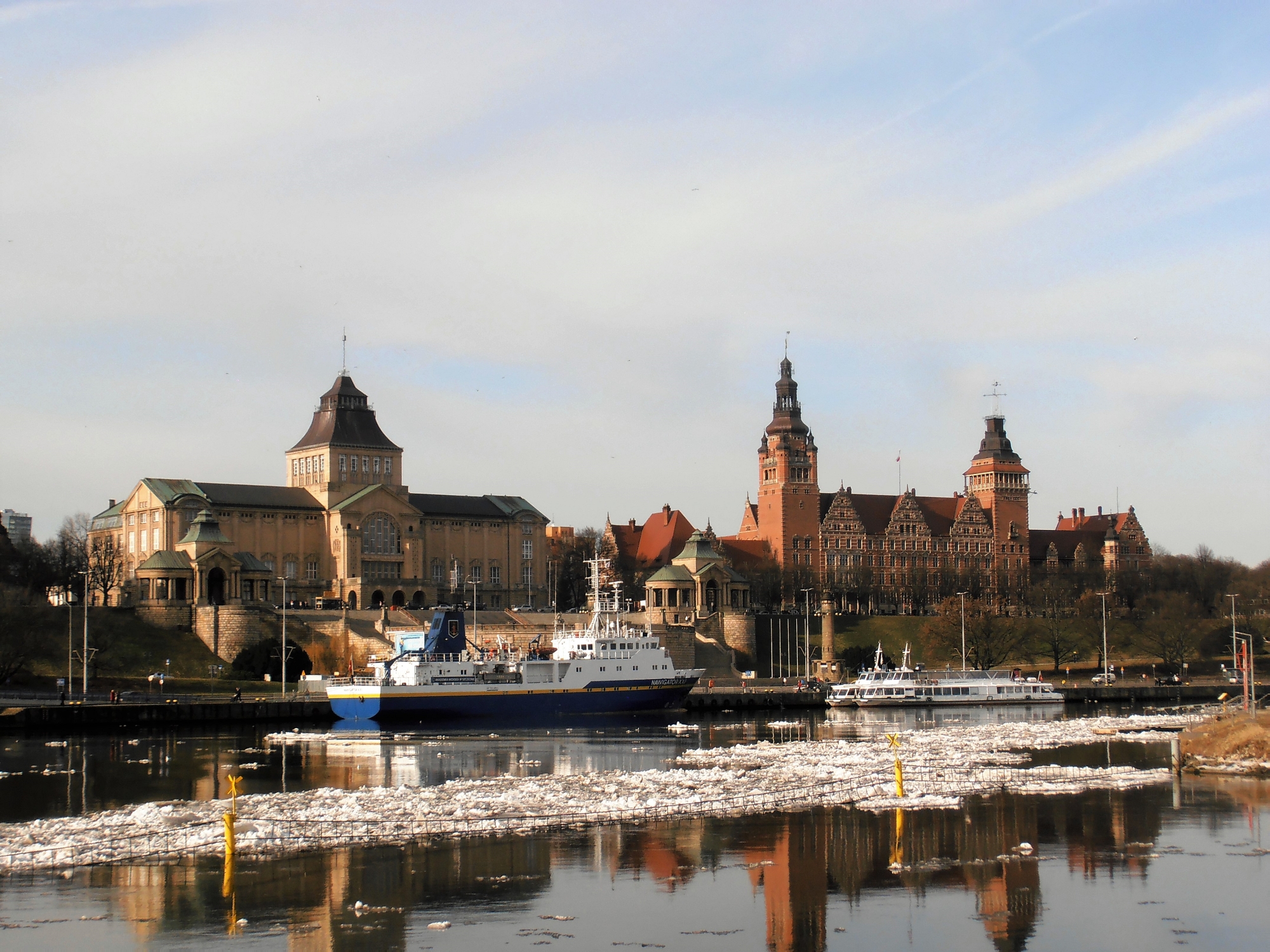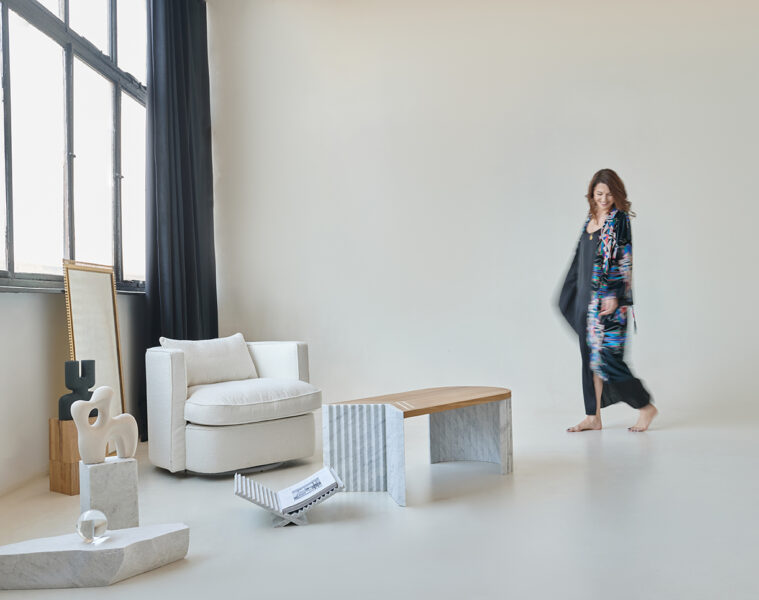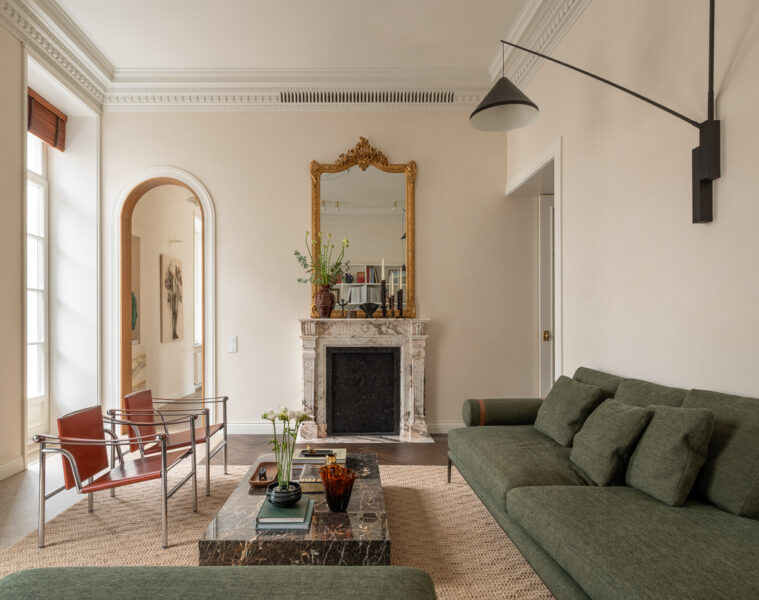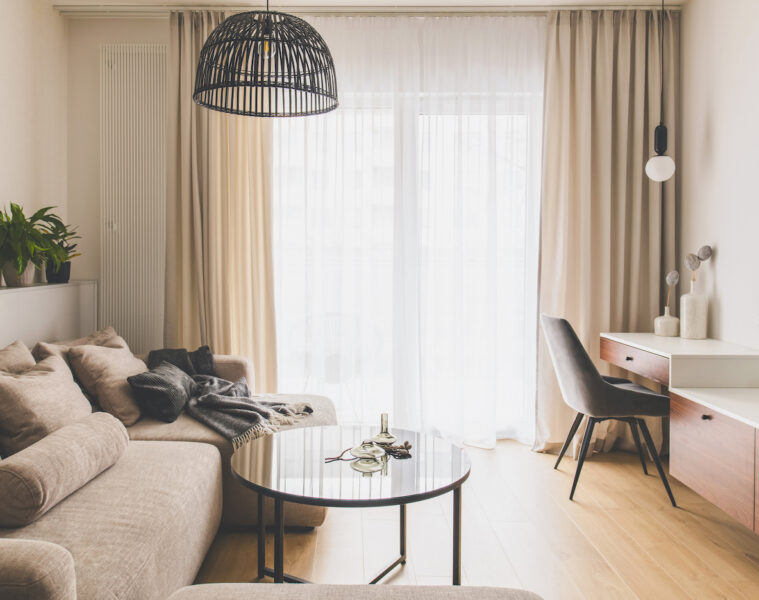The building of the National Museum in Szczecin, located at 3 Wały Chrobrego Street, is one of the most famous and representative buildings in the city. It forms the centre of the architectural setting of the Wały Chrobrego (formerly Hakenterrasse in German) riverside area. The building was opened in 1913 and was the seat of the City Museum until the end of World War II, where a rich collection of various subjects was exhibited. The building still serves as a museum today and is one of the most impressive buildings of its kind in Poland.
It was decided in 1901 to build the Waly Chrobrego (formerly Hakenterrasse). The museum building was constructed between 1908 and 1911 to a design by Wilhelm Meyer-Schwartau, who planned not only the entire complex, but also the appearance of the individual buildings. It originally housed the City Museum, officially opened in 1913, housing the art collections.
The building of the National Museum in Szczecin. Source: Dorota Kowalik, CC BY 3.0, via Wikimedia Commons
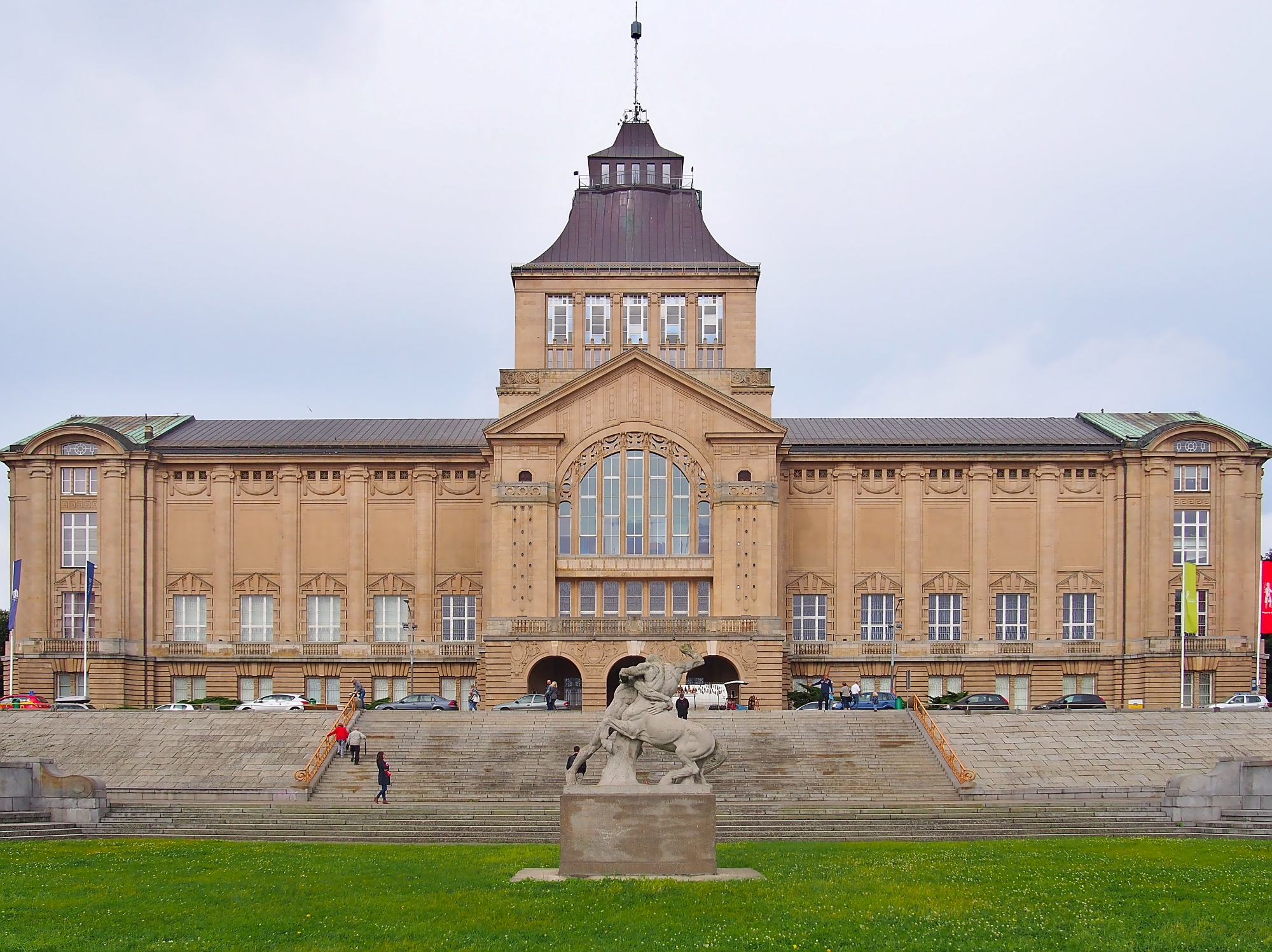
The mighty building, built on an E-plan, refers in its style to Modernism and Art Nouveau. Between the arcades of the main façade portico – facing the Oder River – are reliefs depicting four objects symbolising cultural epochs: the pyramid of Cheops (Egyptian culture), the Parthenon (Greco-Roman culture), Cologne Cathedral (medieval culture) and St Peter’s Basilica (Italian Renaissance culture). The south wall features female figures symbolising painting, printmaking and sculpture. The exhibition area of the building is 5563 m2. The height of the edifice including the dome is 54 m. The museum was never completed. The opening of the first part in 1913 covered about half of the foundation and was also the end of the project. The following year, the First World War broke out and construction took a back seat. The original plan envisaged a four-winged building with a tract on the axis and two inner courtyards. It was never brought back to fruition.
Central Terrace and the National Museum in the early 20th century and in 1946. Source: Pomeranian Digital Library and National Museum in Szczecin
The first years of World War II the building survived without damage. Also during the Allied air raids on what was then Stettin (April 1943 to March 1945), the museum avoided direct bomb hits, but the walls and windows were damaged by shrapnel. It was not until the siege of Stettin in 1945 that the building sustained more serious damage. It is likely that the artillery shelling destroyed the central turret and roof, and damaged the staircase leading from the first to the second floor. Later, the Wały Chrobrego (Chrobry Embankment) became a camping site for civilians fleeing from the eastern parts of what was then Germany, at which point the museum was repeatedly looted and set on fire.
National Museum and Voivodship Office in Szczecin in 1930 and 1947. Source: Deutsche Fotothek www.deutschefotothek.de and fortepan.hu/Bogdan Celichowski
It was not until August 1945 that the staff of the already established Polish City Museum entered the building, finding complete chaos and destruction of the interior, but the essential body of the building survived, which was unique in a city that was ruined in places by as much as 90 per cent. Most of the surviving collections were either evacuated to the City Museum at 27 Staromłyńska Street, or taken to Warsaw, while the provisionally secured building was handed over to the Maritime Museum in October 1946, under the authority of the State Baltic Institute. After renovation, the building was opened to the public in 1948. Two years later the Maritime Museum was incorporated into the City Museum, which changed its name to the Western Pomerania Museum. In the 1980s, renovations were carried out, removing the flagpole platforms and finally removing the skylight windows illuminating the upper rooms. At the same time, the interiors of the upper storey were generally remodelled.
The building of the National Museum in Szczecin in 1915 and 2017. Source: Pomeranian Digital Library and Dorota Kowalik, CC BY 3.0, via Wikimedia Commons
In the early years of the 21st century, the façade was renovated, restoring its former colours, and the vestibule was restored to its original colours and an exhibition of ancient art (according to a concept by R. Makala) was opened, referring to the original setting. At present, in addition to the nautical collections, archaeological and ethnographic collections (African collection) are exhibited in the building. The tower, which is open to the public, offers a view of Szczecin and the surrounding area, especially the Międzyodrze. Since 1950, there has been a theatre stage upstairs, since 1 January 1976 as the Contemporary Theatre.
Source: museum.szczecin.pl, pomeranica.pl
Read also: Szczecin | Architecture | Renovation | Monument | History | Interesting facts

